Muenster Kaserne
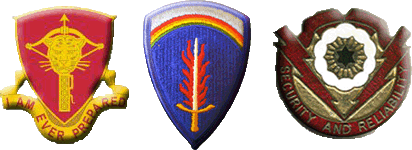
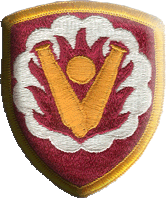
_______________________________
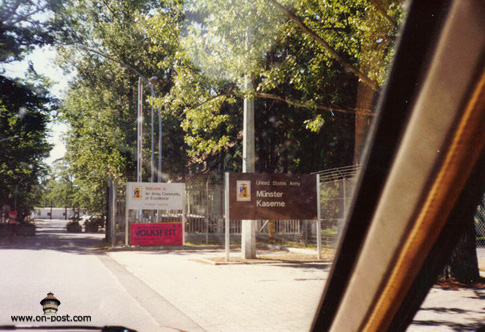 ©Don Henderson
©Don Henderson
Welcome to the Muenster Kaserne
__________________________________

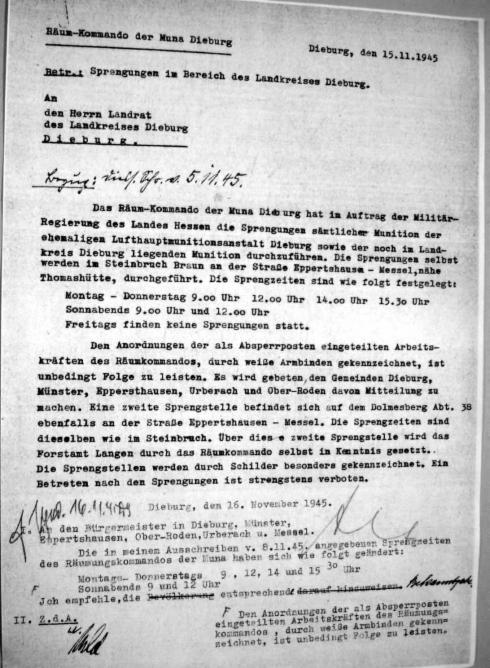
__________________________________
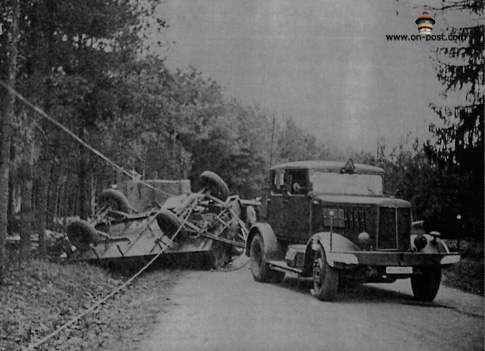
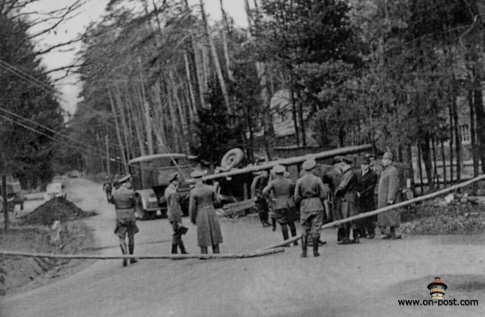
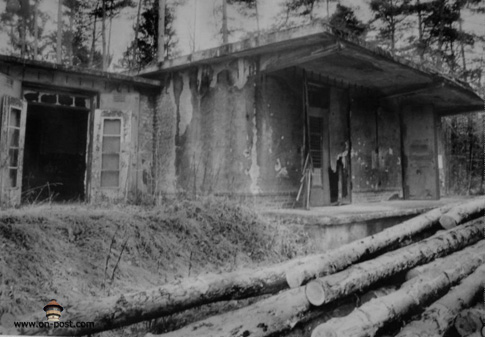
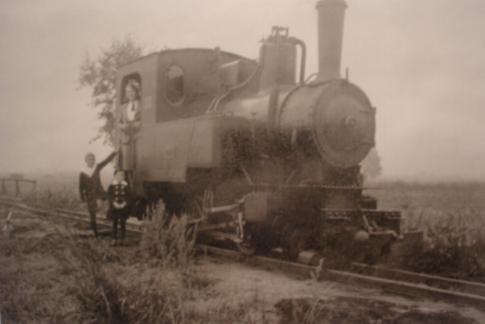
__________________________
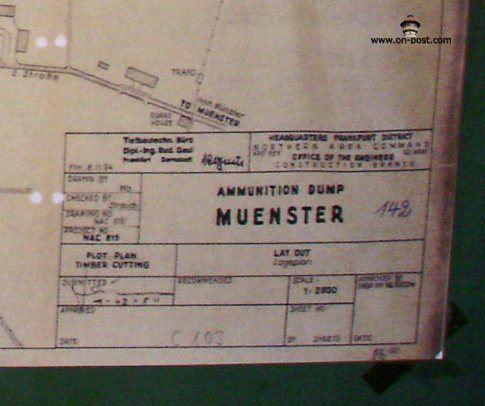
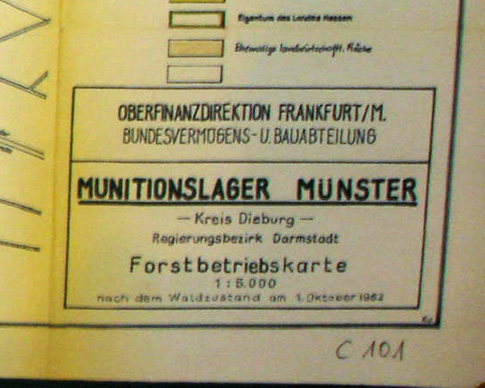

__________________________________
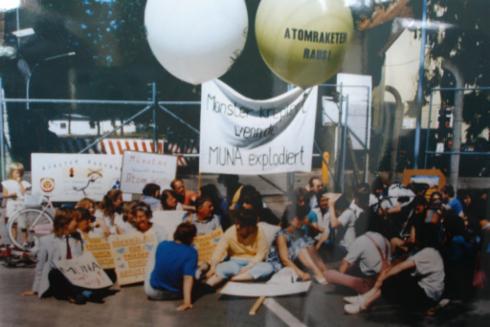
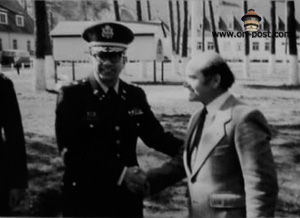
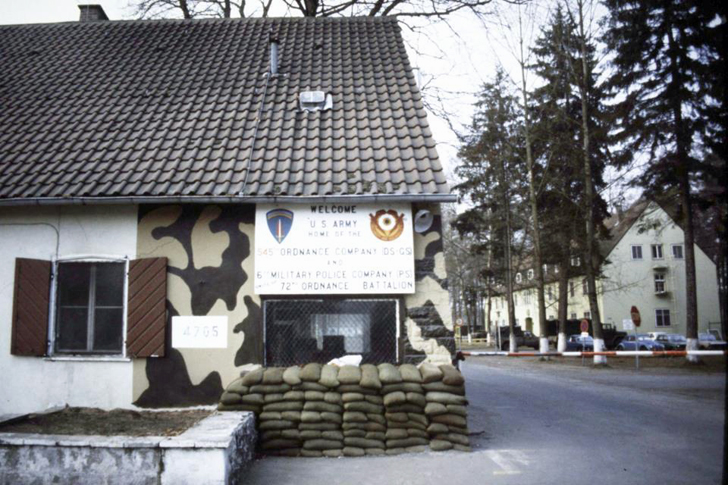
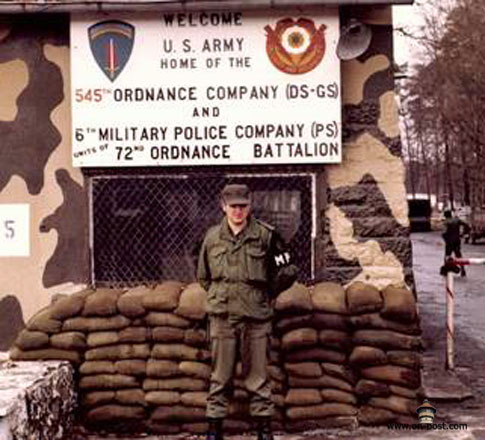
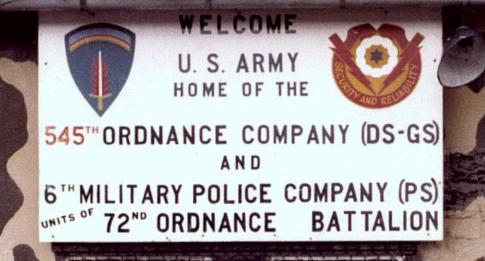

________________________________________
All photos © Ken Sorenson
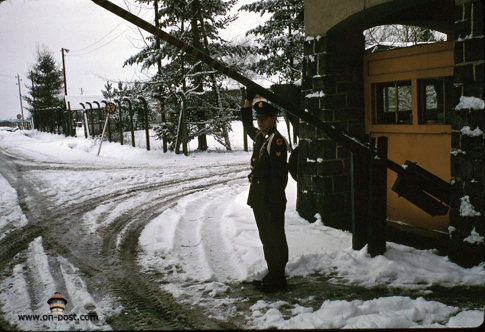
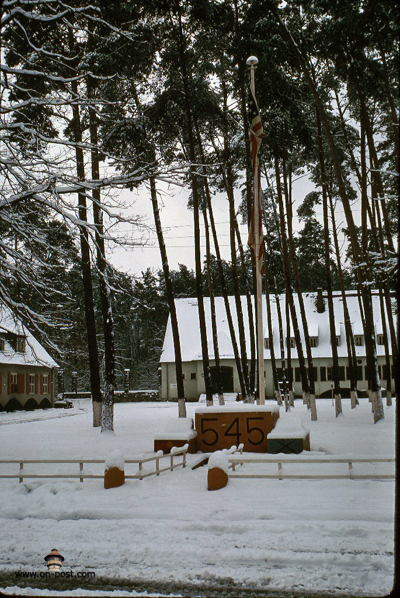
Looking towards the mess hall.
-1968-
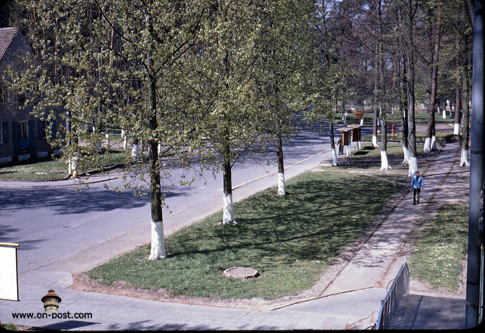
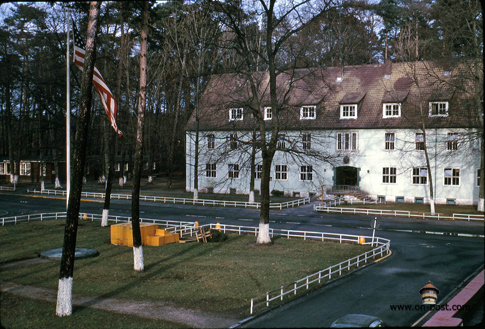
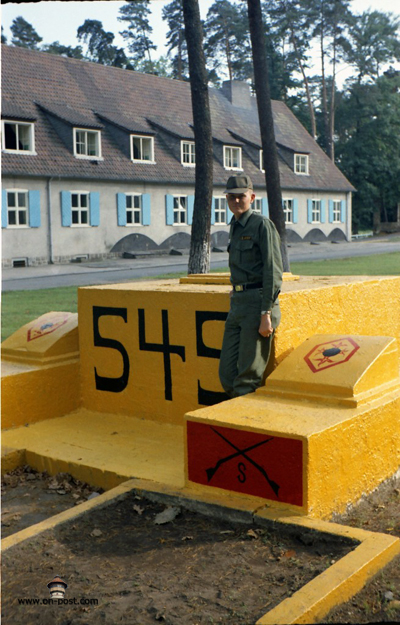
The Flag pole & quad
-Muenster 1968-
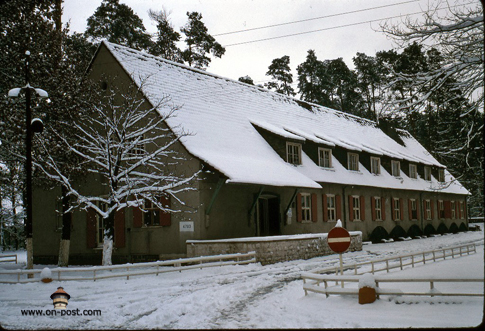
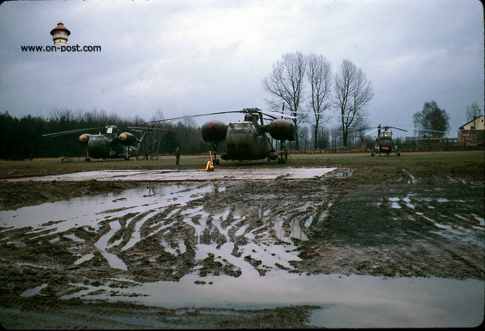
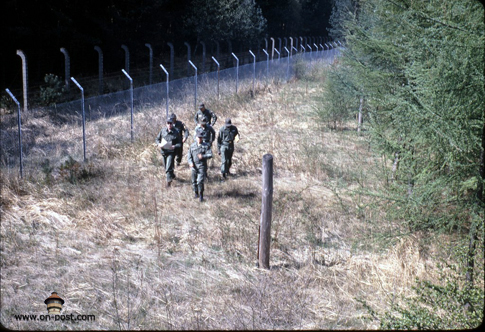
used with permission by Ken Sorensen©2011
____________________________
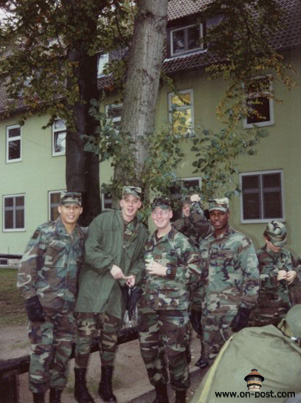
©Matt Alexander
6th MP Co soldiers at Muenster Kaserne
From left to right is SPC Juan Vasquez,
SPC William 'Bill' Moffett, Me, SPC Matt Alexander,
and SPC Lamar Rushing
-1992-
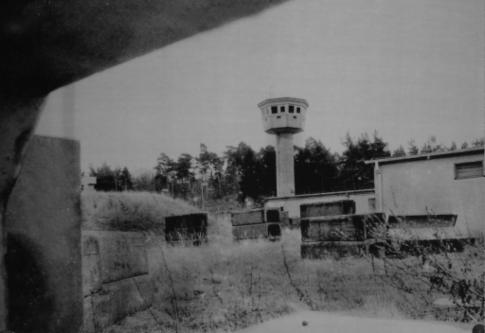
The Muenster Kaserne 1939 - 1945 a brief history The Muenster Kaserne was built by the German Luftwaffe in 1939. As part of the German armament efforts, the Luftwaffe confiscated the wooded area just outside of Muenster, thus using the woods as an advantage as natural camouflage, Muenster was never spotted nor attacked by either the RAF or USAAF. The official name of Muenster was: Lufthauptmunitionsanstalt Dieburg (Airforce armament center Dieburg). Here in Muenster (like several other "muna's" around Germany) the Luftwaffe fabricated their Ammunition and Bombs mostly by compulsory laborers. With the US Army advancing into the Darmstadt region, the German Commandant gave the order to destroy the munitions and bunkers on March 25th 1945. The Kaserne was captured shortly after that. |

©Gemeindearchiv Muenster
The Orders to destroy the munitions and bunkers at Muenster on March 25th 1945 signed by a German Captain 
©Gemeindearchiv Muenster
The Second order to destroy Munitions at Muenster,
this time coming from the US Army.
November 16th 1945
this time coming from the US Army.
November 16th 1945
__________________________________

©Gemeindearchiv Muenster
Accident at Muenster
December 14th, 1941
A Major Accident at the Muenster Munitions Factory cost the lives of 14 laborers and injuring 12, as their tractor pulled rig with 3 trailers overturned in a curve.
December 14th, 1941
A Major Accident at the Muenster Munitions Factory cost the lives of 14 laborers and injuring 12, as their tractor pulled rig with 3 trailers overturned in a curve.

©Gemeindearchiv Muenster
Investigations
later proved that the driver, a German Wehrmacht soldier entered the
curve at a speed of 40 Kmph thus overturning the 1st trailer with the
laborers on it. The Driver was later sentenced to 2 years and 6 months for Manslaughter.

©Gemeindearchiv Muenster

©Gemeindearchiv Muenster
The "Munabahn"
The Railway transportation, to and from the Muenster Kaserne.
The Railway transportation, to and from the Muenster Kaserne.
__________________________

©Gemeindearchiv Muenster
US Army Blueprint
-1950-
-1950-

©Gemeindearchiv Muenster
The German Forest service Blueprint
-1960-
-1960-

©Gemeindearchiv Muenster
US Army Blueprint
-1980-
-1980-
__________________________________

©Gemeindearchiv Muenster
German peace activists in front of the main gate
-1987-
-1987-

©Gemeindearchiv Muenster
Major David Harrison greets Mayor Karl Grimm,
at the Muenster Open house in 1979
at the Muenster Open house in 1979

©Source I-Net
The Main Gate Guardhouse
-1981-
-1981-

©John Tilley
John Tilley 1981

©John Tilley

| 545th Ordnance Company The 545th Ordnance Company was activated in September 1942 at Camp Atterbury, Ind. as Company M, 56th Quartermaster Regiment. The unit was converted and redesignated as Company M, 56th Ordnance Heavy Maintenance Regiment in August 1942. In October 1942, it was reorganized and redesignated as the 895th Ordnance Heavy Maintenance Company and in May 1943 as the 895th Ordnance Heavy Automotive Maintenance company. In March 1950 the company was redesignated as the 545th Ordnance Co. and activated in Yokohama, Japan. It received credit for participating in ten campaigns and was awarded two Meritorious Unit Commendations. From June 1957 through July 1958, the company was active in Germany. Finally, in June 1959 the 545th was activated in Muenster-Dieburg, Germany from what had been Company C, 15th Ordnance Battalion. The 545th was assigned to the 15th Ordnance Battalion. In February 1977, the 545th Ordnance Company was reassigned to the 72nd Ordnance Battalion. The company was inactivated in June 1992. |
| 15 Ordnance Battalion 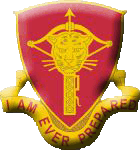 Distinctive Unit Insignia Description A Gold color metal and enamel device 1 1/8 inches (2.86 cm) in height overall consisting of a shield blazoned: Crimson, upon a cross bow bent, arrow palewise, a leopard's face Or. Attached below the shield a Gold scroll inscribed "I AM EVER PREPARED" in Red letters. Symbolism The crimson and yellow are the colors of the Ordnance Corps. The functions of the organization are allegorically illustrated by the leopard's face, heraldically symbolic of a valiant and hardy warrior who enterprises hazardous things by force and courage. The medieval cross bow signifies a man's resolve to abide the utmost hazards of battle and to that end has furnished himself to the full, thus denoting martial readiness. The motto is expressive of the alertness of the personnel at all times. Background The distinctive unit insignia was originally approved for the 15th Ordnance Maintenance Battalion on 3 March 1943. It was redesignated for the 15th Ordnance Battalion on 3 May 1954.  Coat Of Arms Blazon Shield Crimson, upon a cross bow bent, arrow palewise, a leopard's face Or. Crest None. Motto I AM EVER PREPARED. Symbolism Shield The crimson and yellow are the colors of the Ordnance Corps. The functions of the organization are allegorically illustrated by the leopard's face, heraldically symbolic of a valiant and hardy warrior who enterprises hazardous things by force and courage. The medieval cross bow signifies a man's resolve to abide the utmost hazards of battle and to that end has furnished himself to the full, thus denoting martial readiness. The motto is expressive of the alertness of the personnel at all times. Crest None. Background The coat of arms was originally approved for the 15th Ordnance Maintenance Battalion on 3 March 1943. It was redesignated for the 15th Ordnance Battalion on 3 May 1954. The coat of arms was rescinded on 9 December 1964. |
| 59 Ordnance Brigade  Shoulder Sleeve Insignia Description On a shield 2 1/2 inches (6.35 cm) in width and 3 inches (7.62 cm) in height overall, crimson with a 1/8 inch (.32 cm) yellow border, a white disc with scalloped rim containing a crimson flame of nine tongues surmounted by a small yellow disc at upper center between two cannon barrels in a V position, their breeches conjoined in base. Symbolism Crimson and yellow are the colors used for Ordnance. The cannon barrels represent weapons, the disc at center a round of shot or ammunition, and the flames suggest ordnance repairs. The white area, suggesting a cloud of smoke, alludes to explosives. The position of the cannon barrels simulating the Roman numeral five, together with the nine tongues of the flame, alludes to the organization’s numerical designation. Background The shoulder sleeve insignia was approved on 18 April 1980. 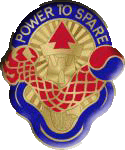 Distinctive Unit Insignia Description A gold color metal and enamel device 1 1/4 inches (3.18 cm) in height consisting of a red dragon’s foreleg with scales outlined gold and five claws at the left, bent at the elbow in center base and having on its shoulder at right a Korean Taeguk in red and blue; centered behind the dragon’s leg between a blue arch at the top extending from shoulder to claws of the dragon leg and inscribed in gold with the words “POWER TO SPARE” and in base a wavy blue band terminating at the claws and shoulder of the dragon leg, a gold castle tower with red pointed roof top. Symbolism Crimson and gold are the colors of the Ordnance Corps. The unit’s World War II service in the Central Europe and Rhineland campaigns is represented by the castle tower and the wavy band in base, and the general configuration of the tower is an allusion to ordnance materiel. The dragon leg is adapted from designs found on Korean artifacts, its five claws referring to the number of Korean campaign credits and the Taeguk symbol on its shoulder denoting a Meritorious Unit Citation for Korean service. Background The distinctive unit insignia was originally approved for the 59th Ordnance Group on 12 May 1969. It was redesignated for the 59th Ordnance Brigade on 8 March 1978 |
________________________________________
All photos © Ken Sorenson

The main gate.
-1968-
-1968-

Looking towards the mess hall.
-1968-

-Muenster 1968-

Looking towards the north barracks.

The Flag pole & quad
-Muenster 1968-

Looking towards the tech barracks

Two CH-37 Mojave and a CH-34 Choctaw, at the Muenster helipad.
-1968-

Troops inspect the back area
used with permission by Ken Sorensen©2011
____________________________
6th Military Police Company & 545th Ordnance Company 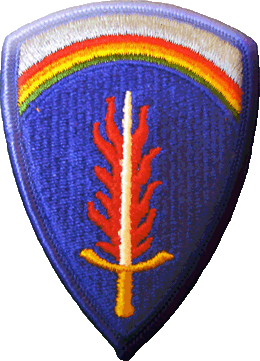  The 6th Military Police Company was reactivated for service in Europe during the later years of the Cold War. The unit was created at the Muenster-Dieburg Special Weapons Depot during September of 1977, the result of incorporating several security detachments into a company size organization. The process took several months to complete and included combining on-site security guards as well as the absorption of two distinct MP Detachments that had been assigned to the site since 1969. The Muenster Depot, located near the town of Darmstadt, had been a conventional ammunition storage facility since the days following WWII. During the early months of 1959, the Honest John missile system and the companion nuclear warheads began arriving at the site. As a result, in June of 1959, the 545th Ordnance Company was activated at the depot to maintain the weapons system and the facility became known as NATO Site 111. Security required that a special section of the 545th, known as the Explosive Ordnance Disposal (EOD) Security Unit, assume all physical security responsibility for the site. The EOD unit was initially staffed with Infantry, Ordnance and eventually some personnel trained as MP's. A series of expansions and renovations at Muenster throughout the 1960's created a need for additional security personnel. As a result, in December of 1969, both the 9th and 51st MP Detachments were assigned to the Muenster depot to bolster the guard force at the expanding depot. The primary mission of the 6th MP Company remained that of providing the guard force for the weapons depot. In addition, troopers provided a security force for the relocation of warheads either by truck convoy or helicopter air transport. However, significant changes in Company operations occurred soon after the 6th was established at Muenster and these improvements allowed the troopers a diversity of work assignments. The 6th MP Company field trained with V Corps several times a year. During many of these training maneuvers, the unit was required to establish a field weapons depot. Military Working Dog (MWD) teams were created within the 6th during 1977. At one point during the 1980's, the MP's of the 6th were allowed to assist with white hat law enforcement patrol for the Provost Marshals Office in Kaiserslautern during their offduty hours. This arrangement lasted for only a short duration and was designed to crosstrain personnel. By 1982, improvements resulted in the Company being awarded the prestigious JP Holland Award. The INF Treaty requiring the removal of tactical nuclear weapons from Europe resulted in the eventual abandonment of the Muenster Depot. The last nuclear warheads departed the site on an air mission in November of 1991. Staff Sergeant Brian Grossman was aboard the Chinook helicopter for this final weapons movement. By that time, most of the personnel of both the 6th MP Company and the 545th Ordnance Company had been reassigned and the units were preparing to inactivate. The skeletonized sections that remained on-site maintained the property and performed administrative functions. The 6th MP Company and the 545th Ordnance Company officially inactivated at Muenster-Dieberg on June 15th 1992. The bunkers had been emptied, the tower doors welded shut and the gates to the property were locked. The site was turned over to a reunited Germany in 1994. |

©Matt Alexander
6th MP Co soldiers at Muenster Kaserne
From left to right is SPC Juan Vasquez,
SPC William 'Bill' Moffett, Me, SPC Matt Alexander,
and SPC Lamar Rushing
-1992-

| 15th Ordnance Bn (Ammo)  With the advent of new (nuclear) weaponry and modernization of the Army, the 15th Ord Bn (Maint) was called again to active service. On 21 April 1952, the 15th Ordnance Battalion was redesignated as the 22nd Very Heavy Artillery Group and allotted to the Regular Army. Activation tool place 7 May 1952 at Sandia Base, New Mexico, with concurrent assignment to Field Command, Armed Forces Special Weapons Project. The Very Heavy Artillery Group designation was in effect for approximately one year. On 1 April 1953, the new designation became the 15th Ordnance Battalion (Special Weapons Support). The next nine months were utilized for individual and unit training preparation for possible movement. Transfer orders were received in December 1953 with the actual move taking place on 12 January 1954. At this time the entire battalion, less B Company, moved by motor convoy from Sandia Base to Fort Bliss, Texas, where it was attached to the 1st Guided Missile Group. The 15th Ordnance Battalion participated in Exercise Flashburn during April-May 1954. In May 1954, movement orders were received transferring the 15th Ord Bn to Europe in support of the Seventh US Army. The actual move started at Fort Bliss on 24 November 1954, and was completed on 14 December 1954 at a location called Kriegsfeld. Initial attachment was to the 57th Ordnance Group. Several years passed before another organizational change. On 1 June 1959, the 15th Ord Bn was redesignated as the 188th Ordnance Battalion. This new designation was short lived, for on 1 January 1960, at the special request of the Commanding Officer, Louis T. Larson, the 188th was deactivated and the 15th Ordnance Battalion was reactivated the same day. On 1 November 1961, the Battalion was relieved from attachment to the 57th Ord Gp and made a part of the 51st Ordnance Group as part of a realignment of the support structure within Seventh Army. At the same time the mission was also changed, so that it became a composite battalion, incorporating special ammunition, field supply and general automotive maintenance support units. Due to increase in size and the more versatile mission, battalion headquarters was moved to Gutleut Kaserne, Frankfurt, Germany, on 7 March 1962. Approximately 18 months later, a change in mission placed the battalion back in the role of providing ammunition support to Seventh Army. It still belonged to the 51st Ord Gp which was a composite organization. This attachment remained in effect until 1 April 1965 when it was detached from the 51st and again attached to the 57th Ordnance Group. The next major organization took place when the COSTAR concept was placed into effect on 1 June 1965. HQ & HQ Det became HQ & HQ Co, and on 18 June, it was detached from the 57th Ord Gp, and attached to the 57th Ordnance Brigade. Several days later, on 22 June 1965, the Brigade was made part of the newly organized Seventh Army Support Command. The mission of the 15th Ordnance Bn from the inception of COSTAR to the present is to provide Class V ammunition support to V US Corps. On 1 July 1968, HHC, 15th Ord Bn moved from Gutleut Kaserne, Frankfurt, to Muenster Kaserne, Münster, Germany. On 14 February 1969, the battalion was transferred from the 57th Ord Gp to 2nd Support Brigade, with operational control of ammunition stock control and reporting retained by 57th Ord Bde. 2nd Support Brigade was then redesignated as V Corps Support Command (V COSCOM) (Prov). In June 1969, V COSCOM (Prov) was redesignated V COSCOM. In July 1969, HHC, 15th Ord Bn moved from Muenster Kaserne to Kelley Barracks, Darmstadt. In November 1969, an organizational change occurred with the approval of the Military Police Detachment MTOE change. Activation came in December 1969, for the 51st and 9th Military Police Detachments. The former was assigned to the 28th Ord Co and the latter to the 545th Ord Co. On 18 October 1972, HHC, 15th Ord Bn moved from Kelley Barracks to Cambrai-Fritsch Kaserne, also in Darmstadt. On 2 January 1973, the 15th Ord Bn was transferred from V COSCOM to Headquarters TASCOM with subsequent assignment to the newly activated 60th Ordnance Group. On 4 May 1976, another organizational change took place when the 184th Ordnance Company was assigned to the 15th Ord Bn from the 84th Ord Bn. Many changes occurred in 1977. On 21 February 1977, the 545th Ord Co, 9th MP Det, 28th Ord Co, and the 51st MP Det were transferred to the 72nd Ordnance Battalion, 59th Ordnance Bde. In another change, the 15th Ord Bn was transferred from the 21st Support Command's 60th Ord Gp to V Corps' 3rd Support Command (SUPCOM) on 1 April 1977. Finally, on 1 October 1977, the 2040th Labor Service (LS) Ordnance Ammunition Company, located in Darmstadt, and the 4230th LS Guard Company, located in Hanau, were reassigned from the 60th Ord Gp to 3rd SUPCOM. Effective that same date, both Labor Service units were attached to the 15th Ord Bn. On 21 April 1978, 15th Ord Bn was again moved from Cambrai-Fritsch Kaserne to Kelley Barracks in Darmstadt. __________________ 72nd Ordnance Battalion  Headquarters and Headquarters Company, 72nd Ordnance Battalion was constituted in the regular Army as Headquarters and Headquarters Company, 36th Quartermaster Regiment (Light Maintenance) in May 1936. In June 1940 it was redesignated as a detachment, however the battalion was activated at Camp Hullen, Texas in March 1942. During WWII, the battalion received credit for participating in one campaign. Following the cessation of hostilities, the 72nd was inactivated in France in November 1945. The battalion was redesignated in March, 1954 as the 72nd Ordnance Bn (Maintenance and Supply) and in May, 1954 the unit was activated at Verdun, France assigned too the U.S. Army Communications Zone, Europe. In 1972, it was activated under the control of the 59th Ordnance Brigade and remained so until June of 1992 |
__________________________
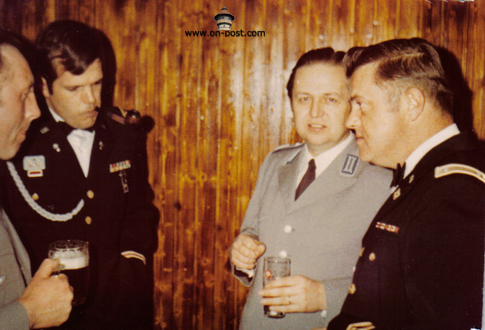
__________________________
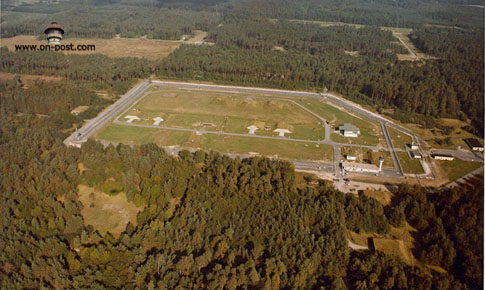
Click here to SUPERSIZE
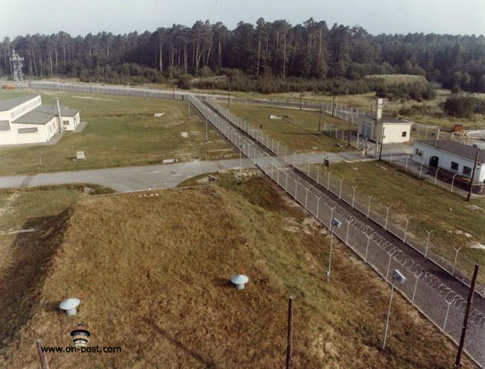
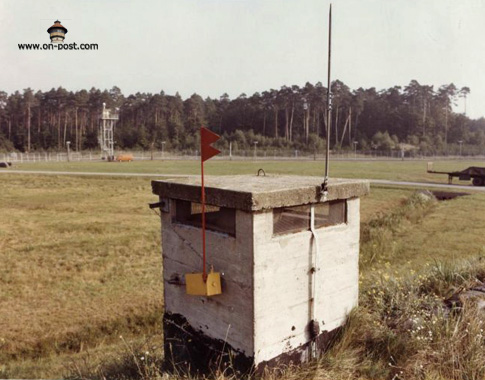
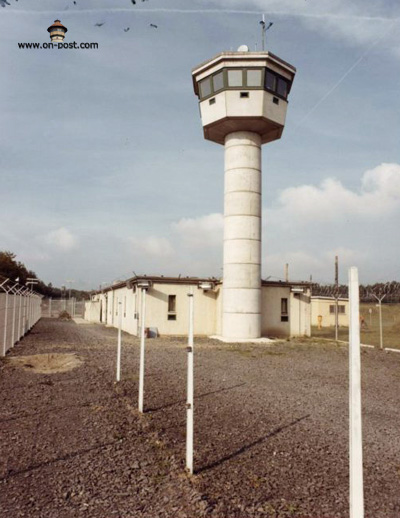
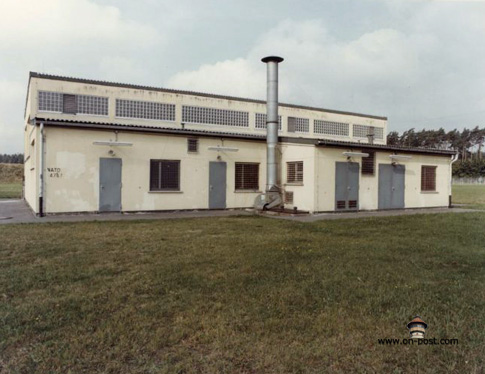
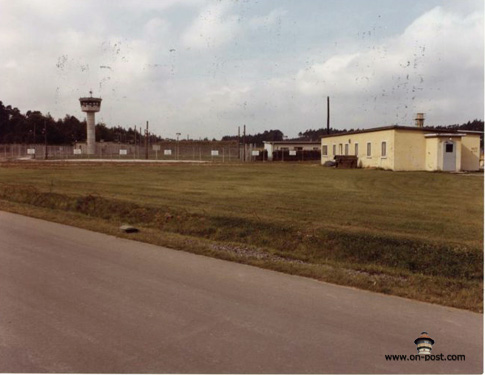
used with permission by Terry Overturf©2011
__________________________
All photos © Richard Little
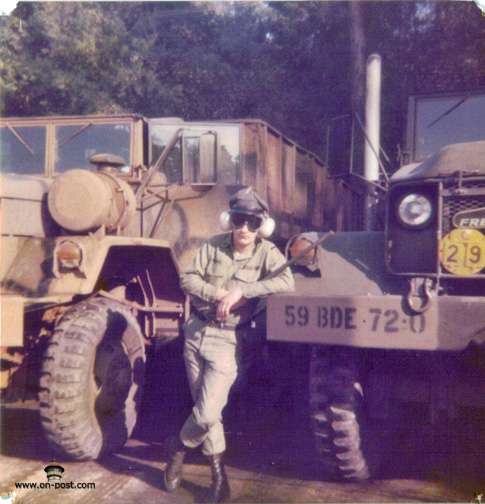
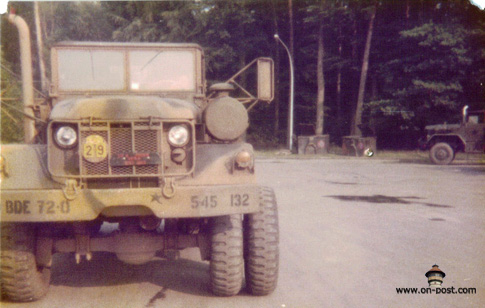
That is a 5 ton tractor
with duel wheels on the front axle.
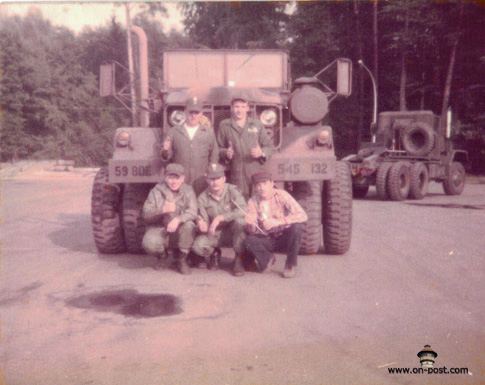
Standing, Shaw on left and Richard Little on right.
Front left to right, Gary Petersen, Larry Robbins
and Dave Vriesman.
1978
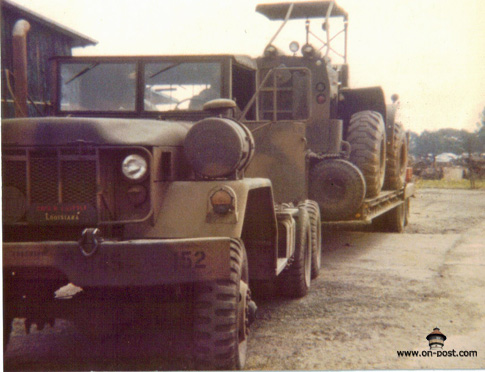
Junk car run to Hanau.
Richard Little always seemed to haul the forklift.
1978
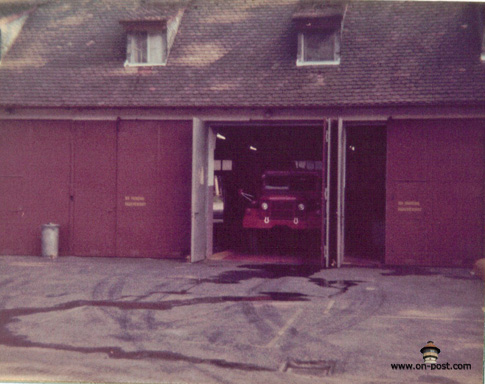
The Firehouse
1977
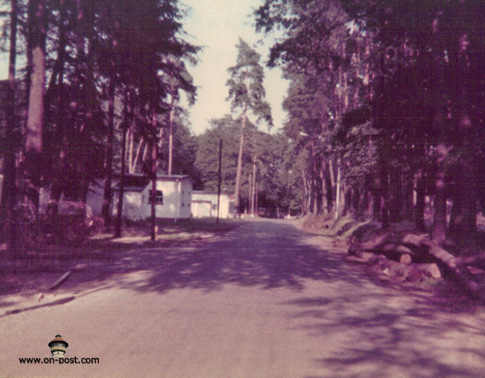
Looking down the road from the firehouse
towards the front gate.
1977
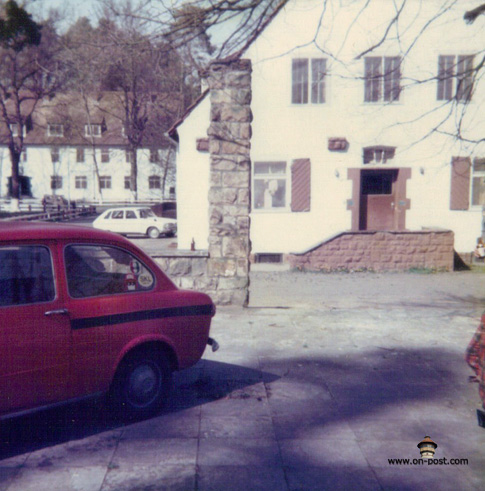
Les Olsens car we picked up and placed on the patio next to the PX.
Boy he got PO'ED. But we didn't care.
1977
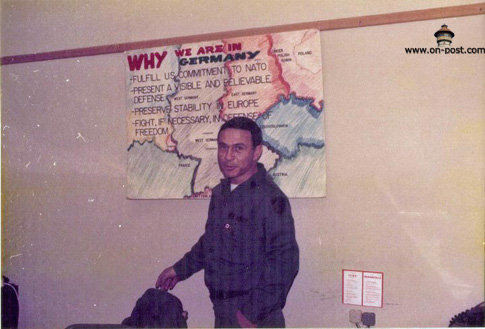
1st Sgt. Green.
Later went to Meisau as the Battalion Sgt. Major.
Picture taken around late 77 or early 78'.
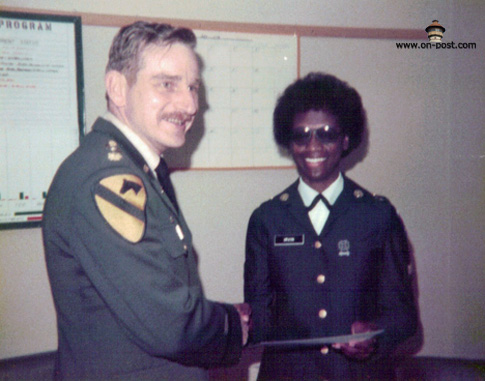
545th Co, Maj. Hard
1977
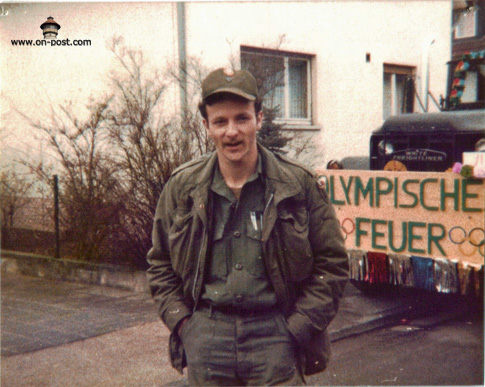
Richard Little, Getting ready to pull a float
Fasching 1977
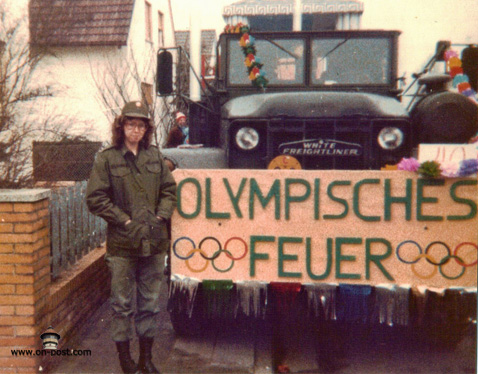
Cindy Loehrer rode with Richard Little pulling the float.
Fasching 1977
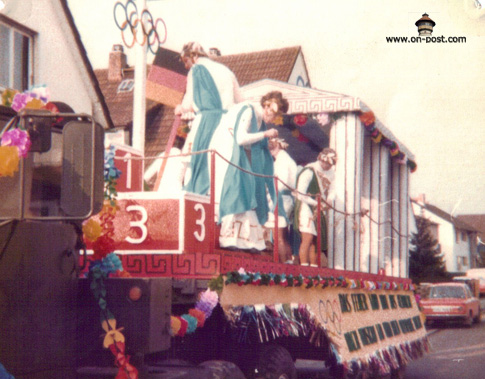
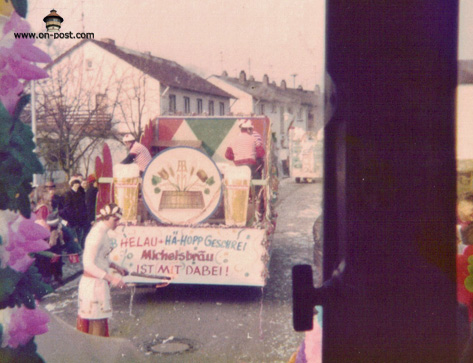
Fasching 77.
They put Richard Little behind the Michelsbrau Float and I had the Olympic theme going. The fellow behind the beer float was the Torch Carrier for my float.
Everytime I needed a beer all I had to do was blow the horn and hold up two fingers and poof. I had two beers.
Life was good that day.
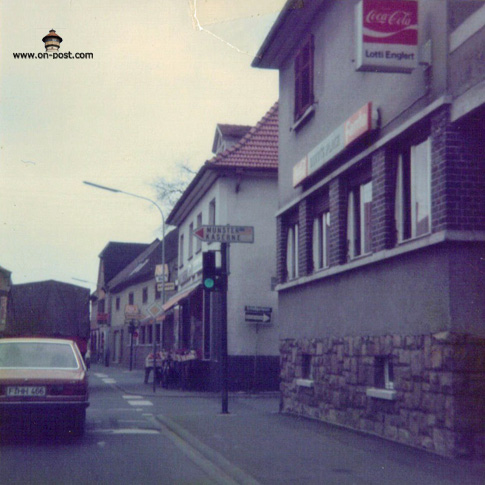
Lottis place on the corner in Munster.
1976
used with permission by Richard Little ©2011
_________________________________
©unknown
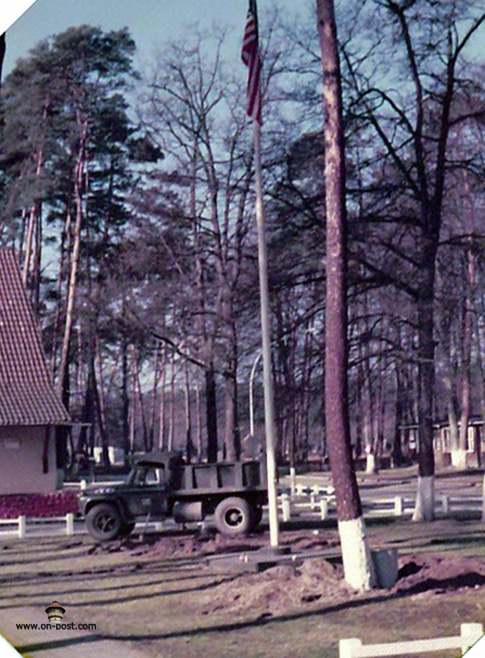
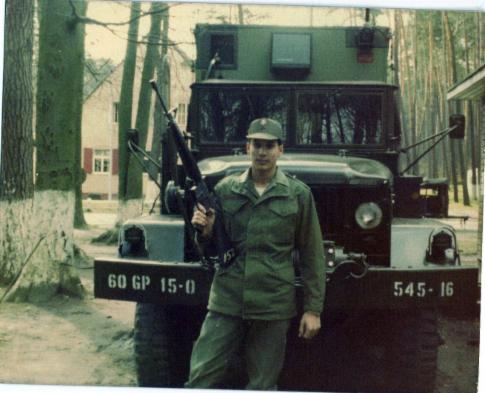
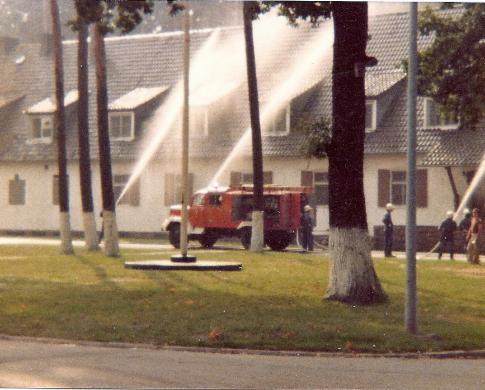
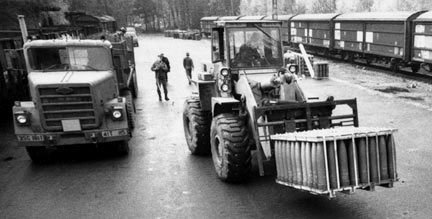
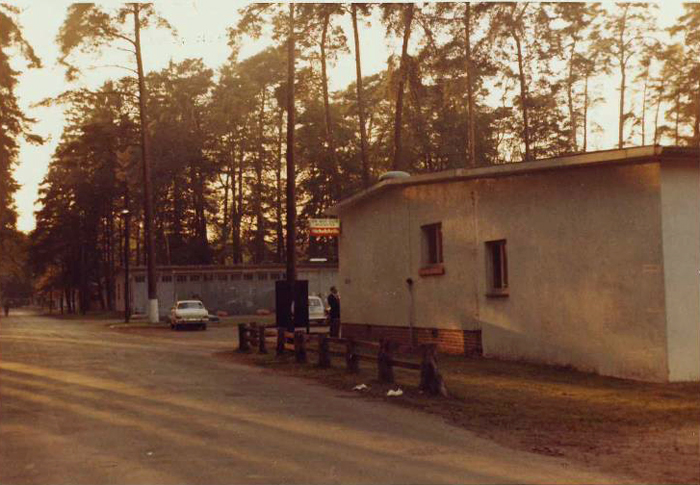
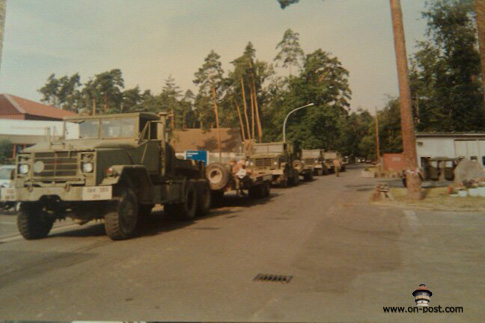
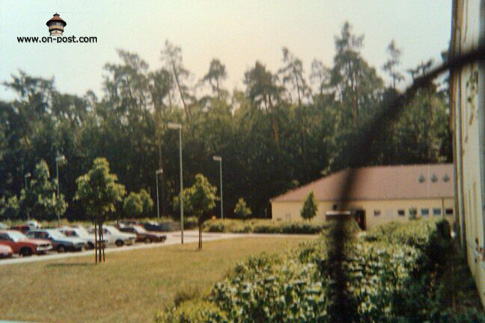
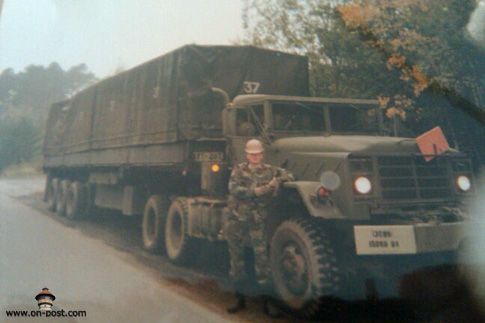
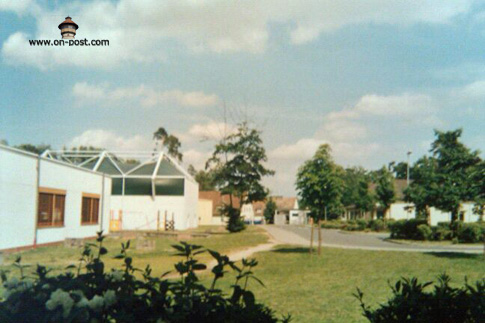
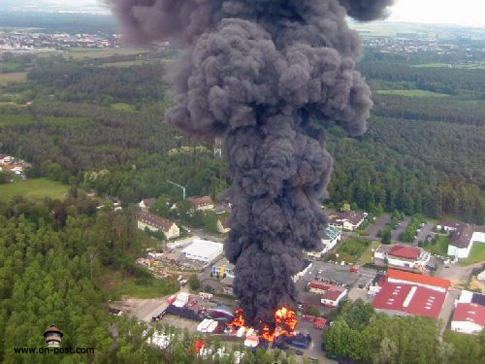
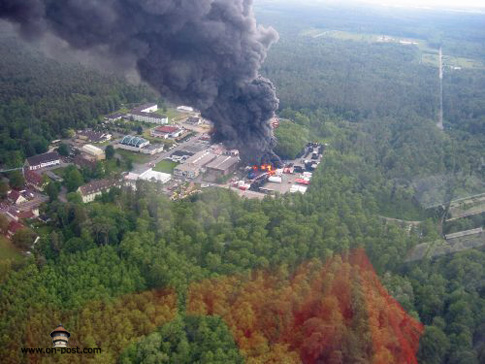
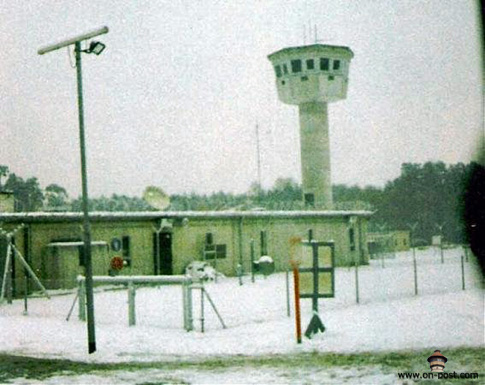
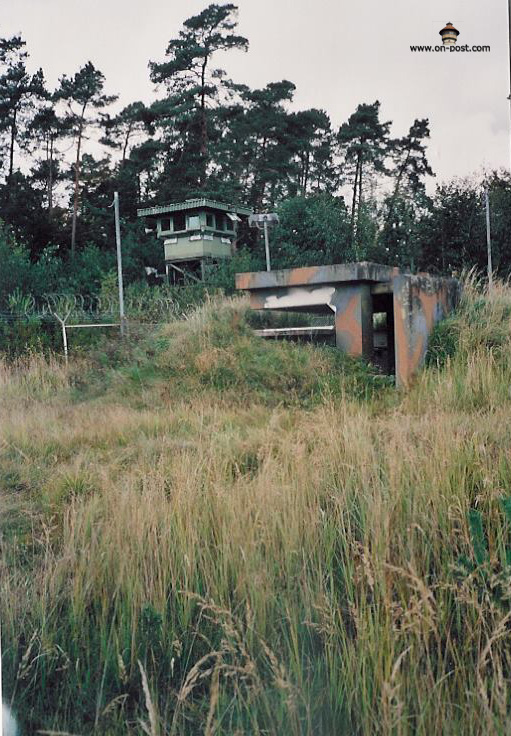
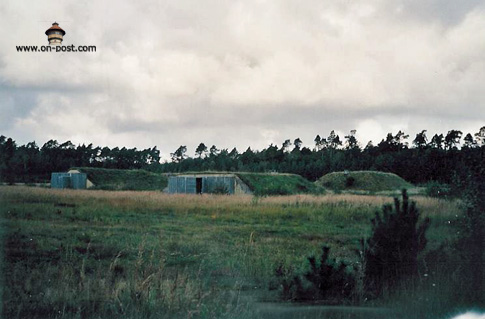
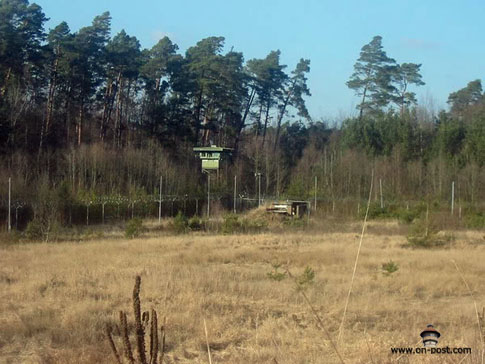
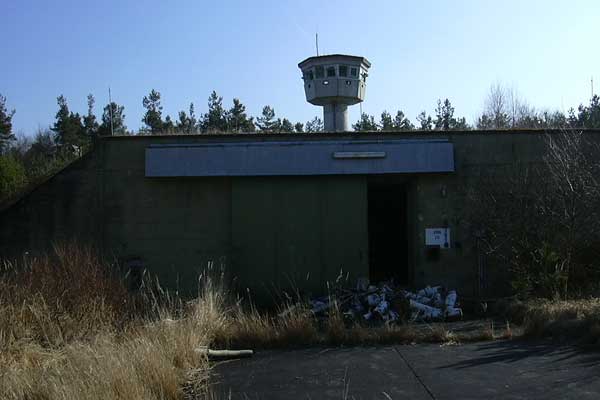
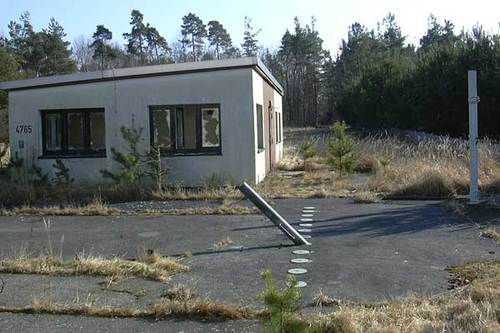
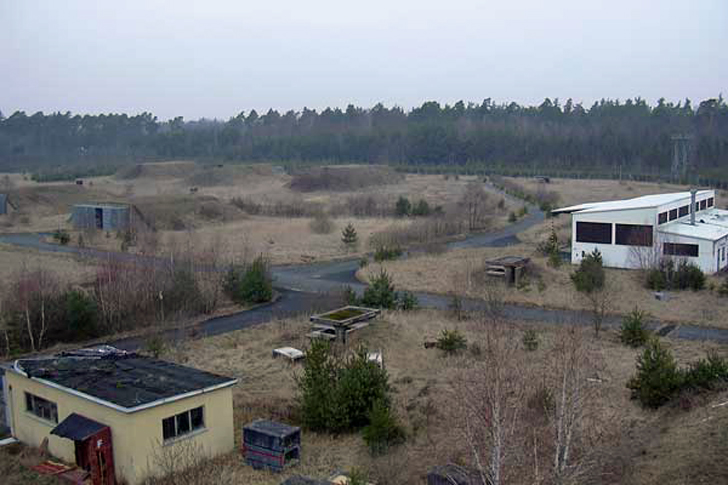
The back area is closed to the public.
The German Government has spent thousands of dollars to remove the Ordnance left over from the German Wehrmacht in WWII.
With the Americans about to liberate Muenster in March of 1945, the Germans destroyed the bunkers thus scattering Ordnance throughout the Munster complex.
The pictures above are copies from the
INTERNET.
There for not my property.
__________________________
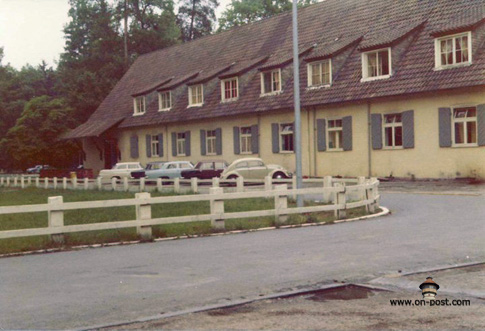
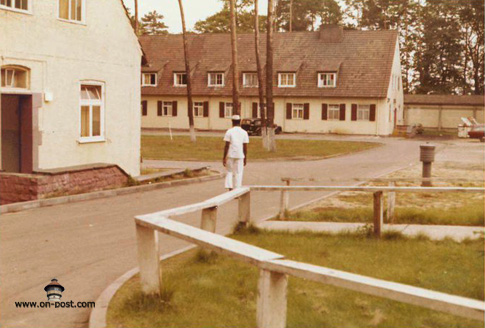
_____________________
All photos © James Rush
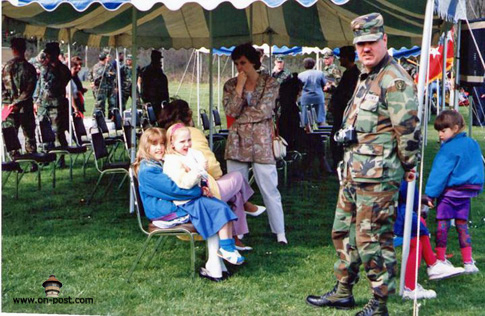
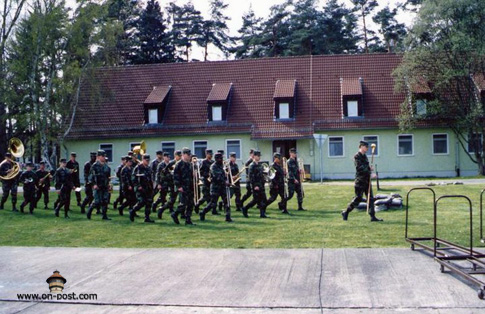
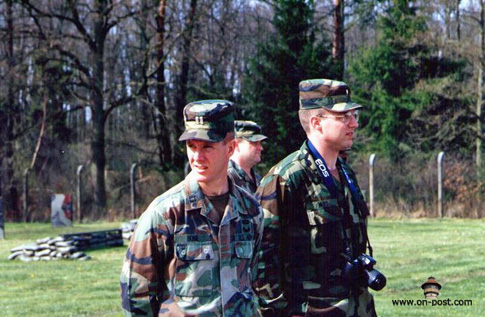
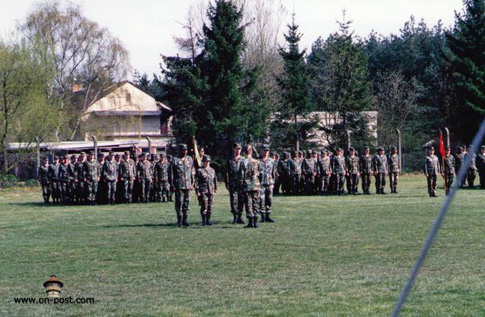
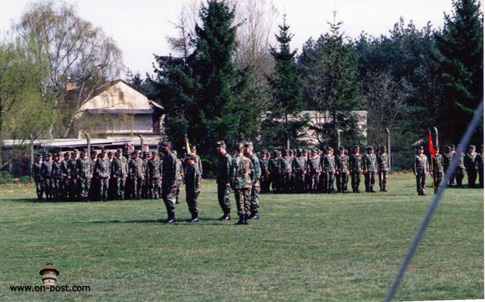
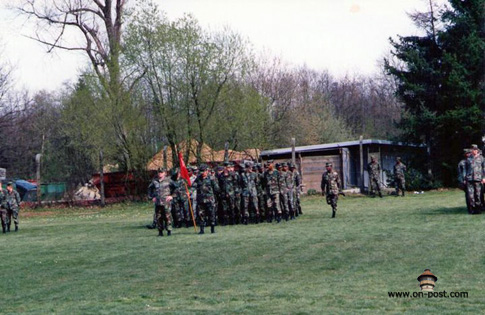
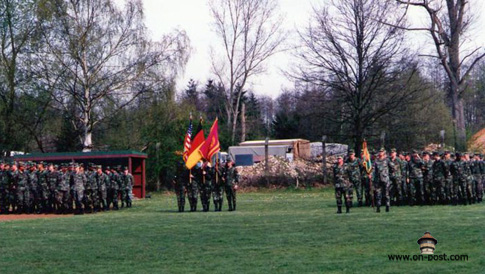
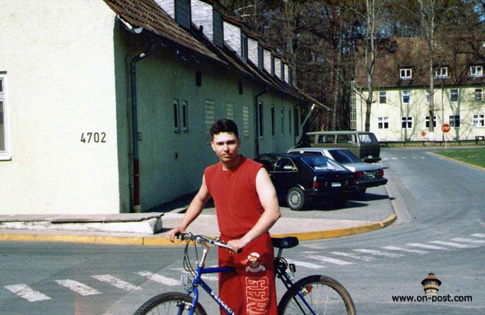
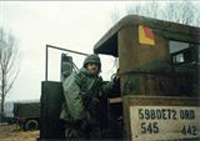
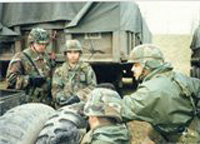
used with permission by James Rush©2011
_________________________________
All photos © Don Henderson
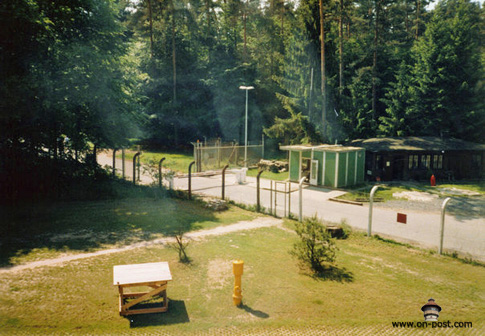
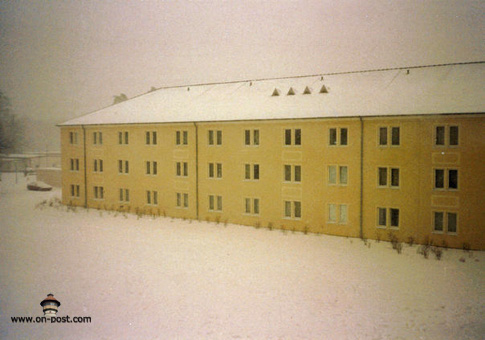
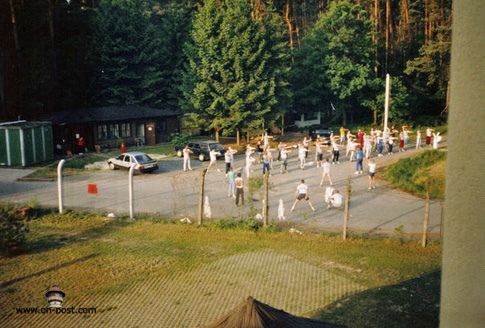
PT, you've got to love it!
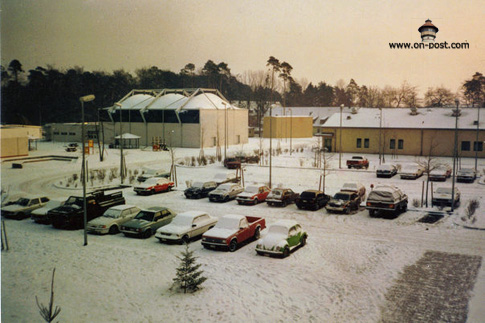
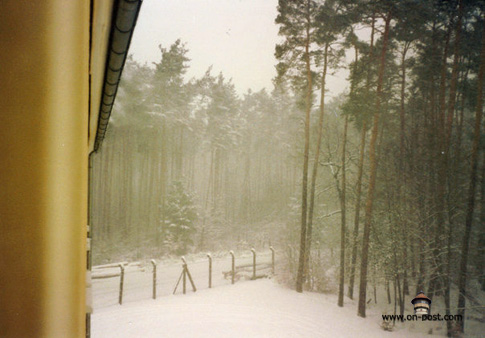
Winter 1991
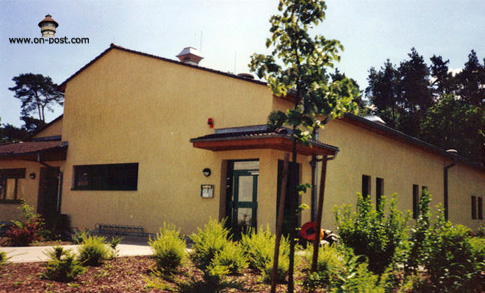
The Mess hall
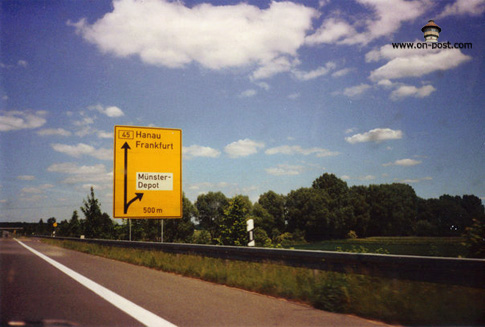
The Autobahn exit to the Depot
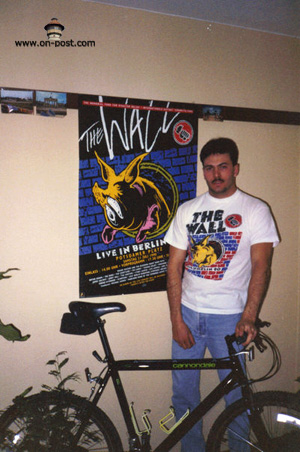
used with permission by Don Henderson©2011
_________________________________
All photos © Scott Copeland
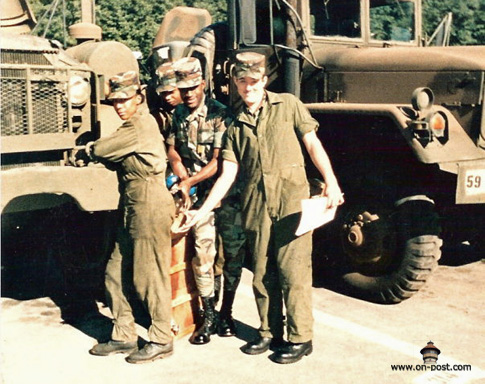
Clowning around
Price, Guyton, Pate & Scott Copeland
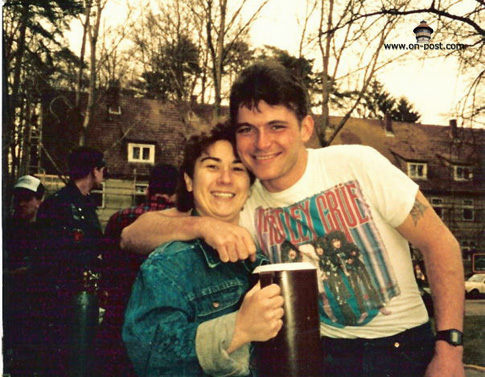
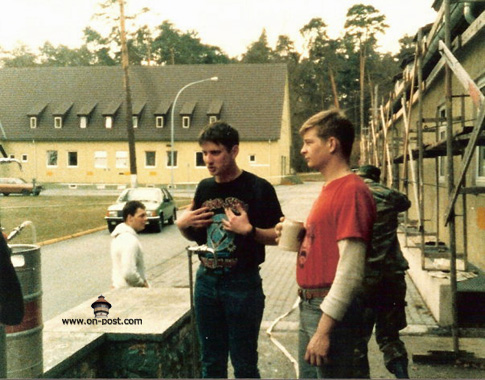

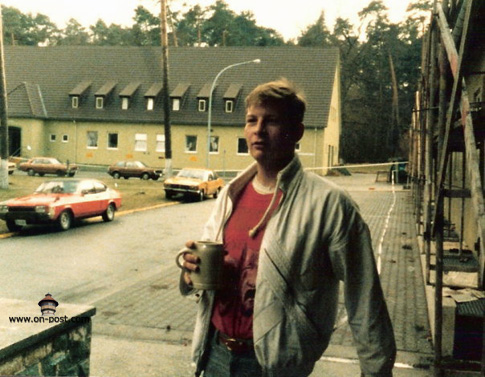
Sgt. Burt
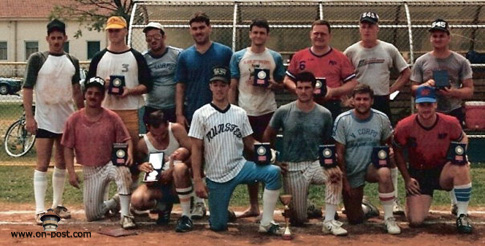
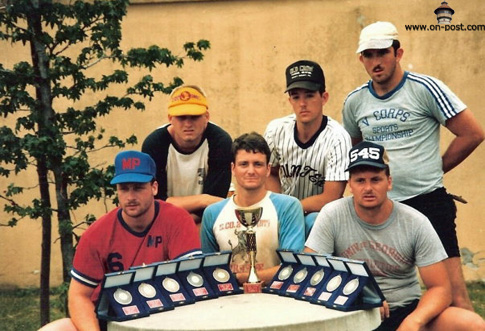
Cortezi, Allen Vivian, Scott Copeland, Tim Grix,
Ray Donaldson
used with permission by Scott Copeland©2011
____________________________________
All photos © Robert McMillin
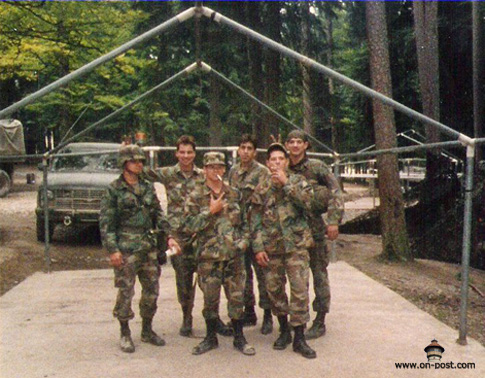
My last trip to graf
Wasson, Me, Dryer, Miller, Mayo and Lt Molero
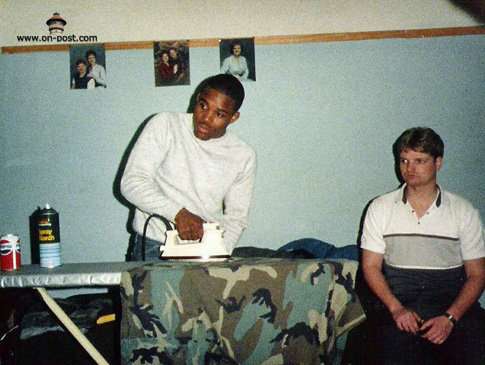
Anthony Tony Barkley
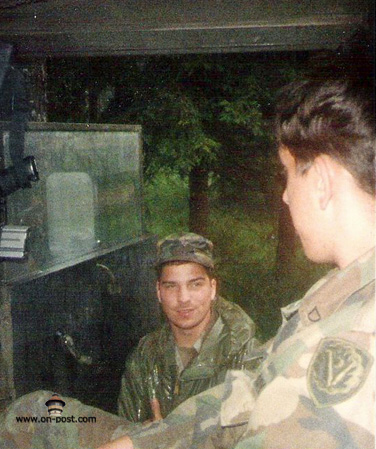
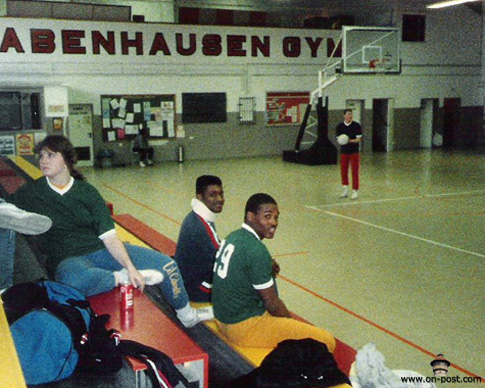
Pate and Clemons at a Volleyball tournamnet
in Babenhausen
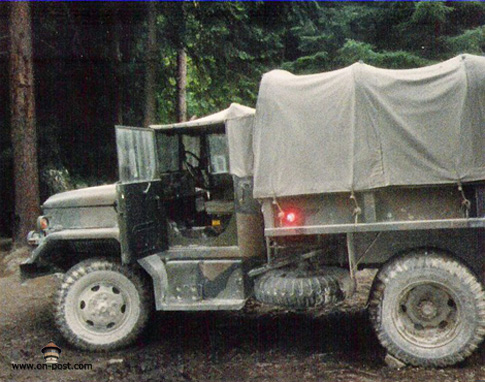
The Duece and a half
My Ride for the 20 months I was at Munster
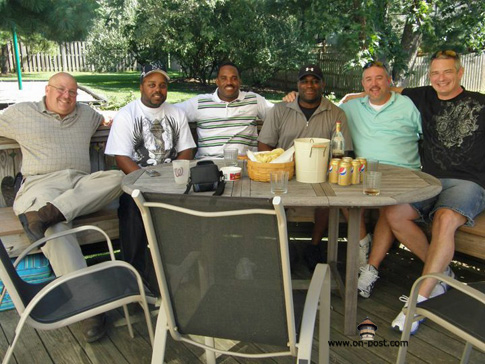
James Wasson, Anthony Beach, James Clemons, Charles Pate, Scott Copeland, Robert McMillin
-2010-
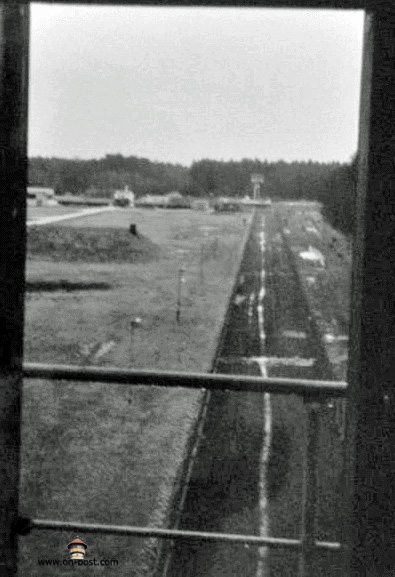
View of Tower 1 from Tower 2
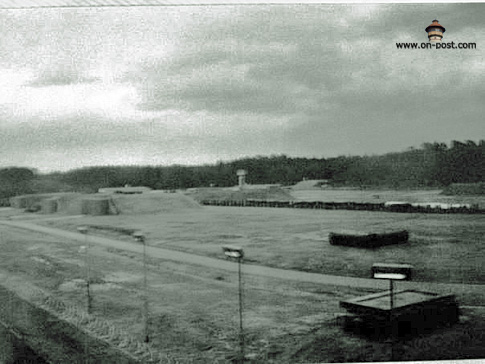
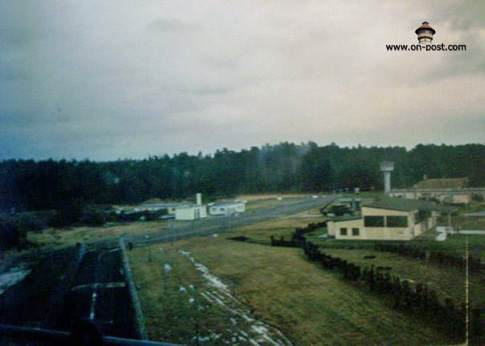
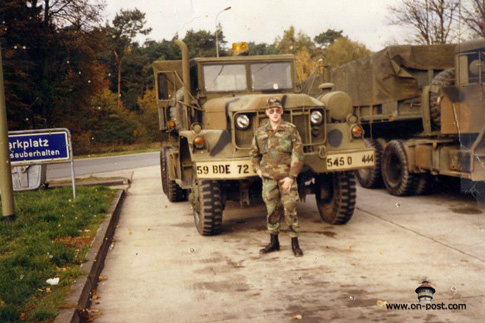
All photos © on-post.com
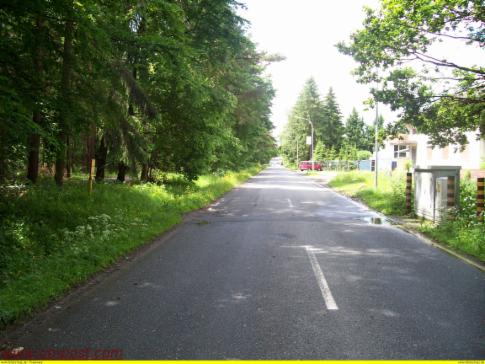
Looking down the road,
Muenster Kaserne
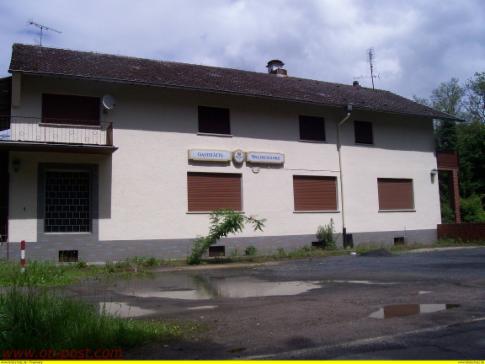
Gasthaus "zum Waldblick"
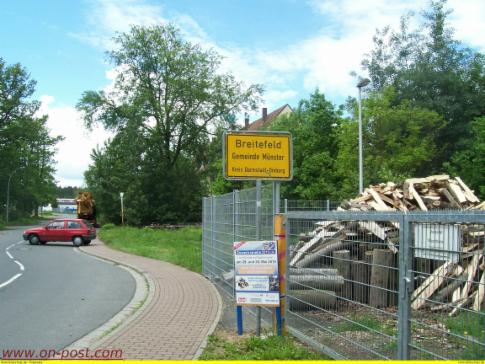
Muenster Kaserne is an Industrial complex now,
and in a rather rundown condition,
enough to - PO any Co.
It is called "Breitefeld now.
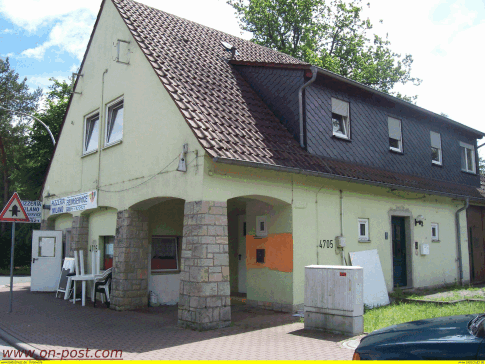
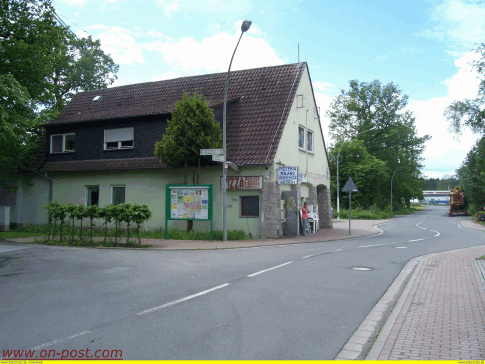
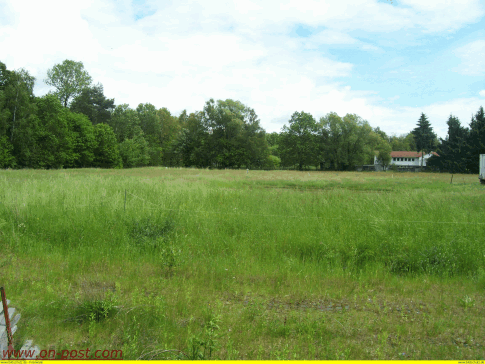
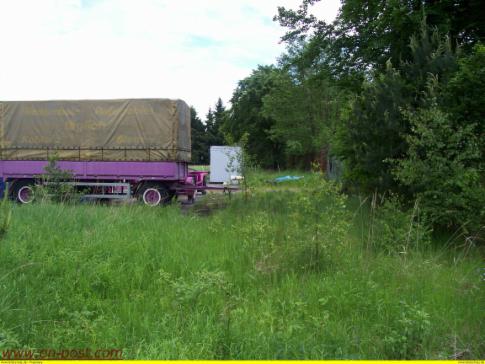
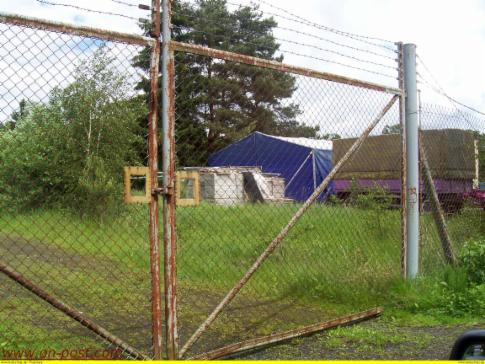
The inflatable basketball court stood here in 1973
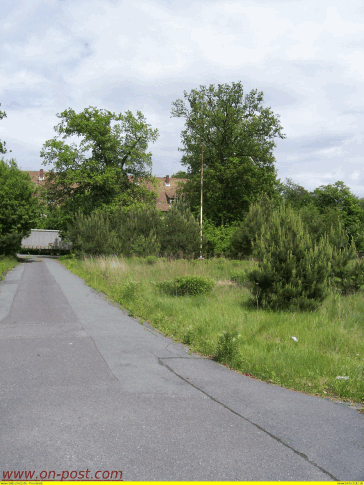
Looking towards the north barracks.
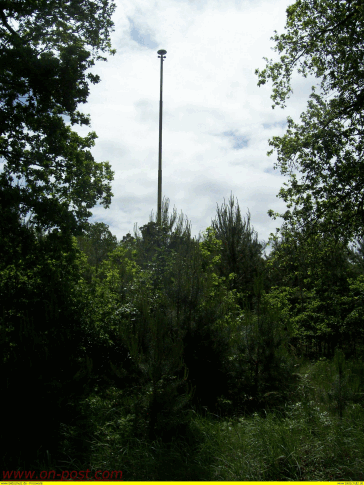
The Flag pole & quad
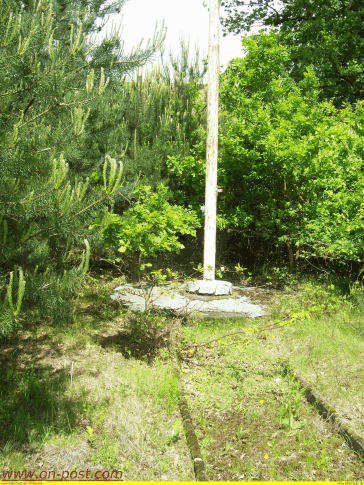
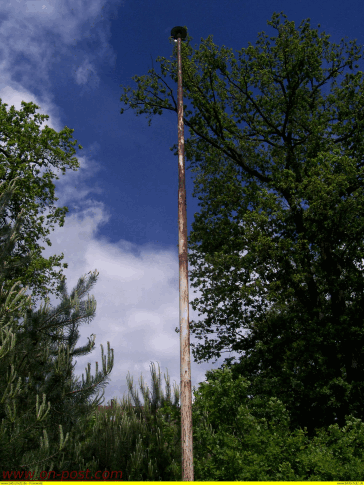
The Flag pole
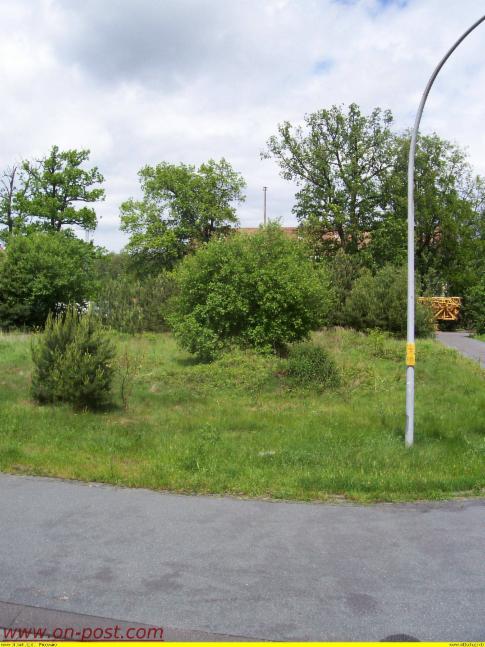
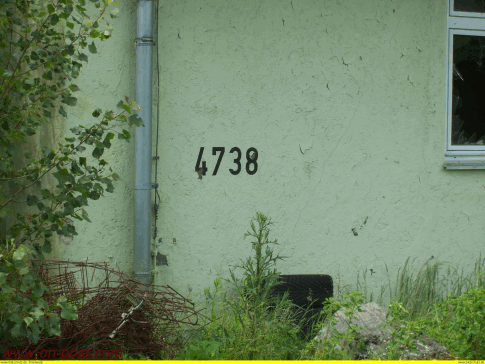
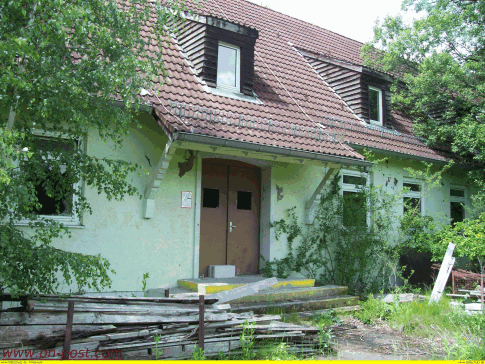
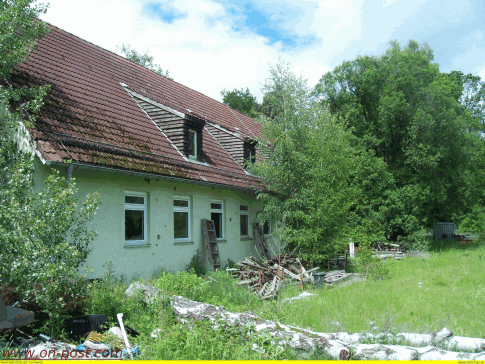
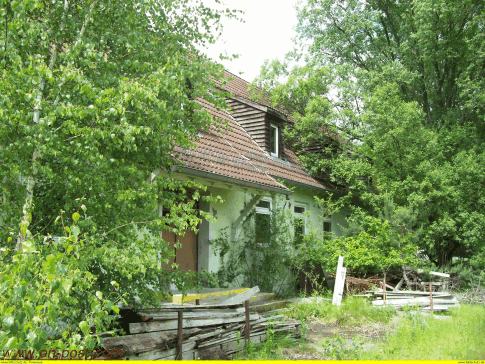
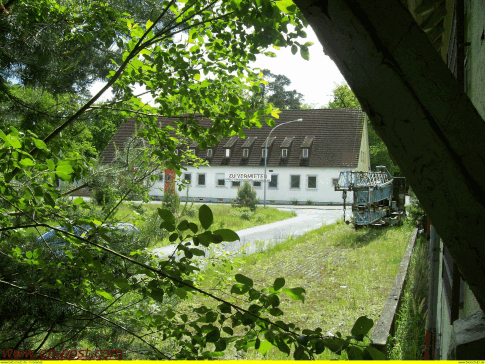
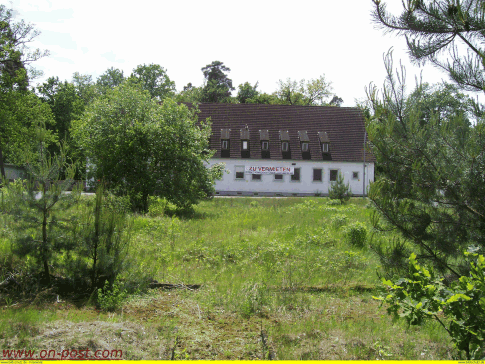
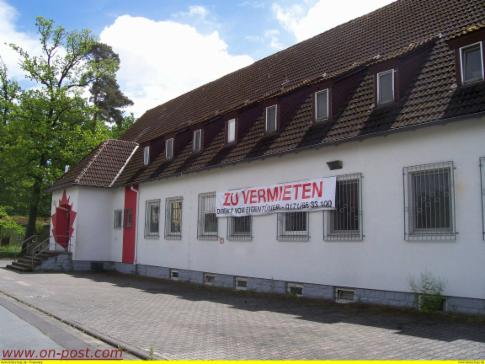
Looking towards the mess hall.
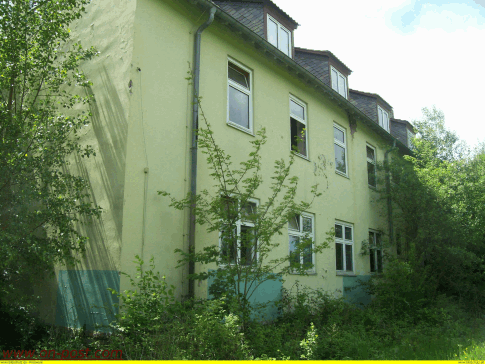
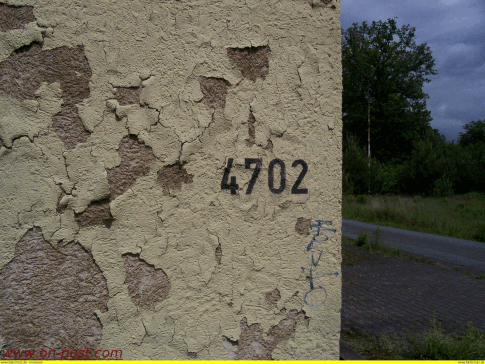
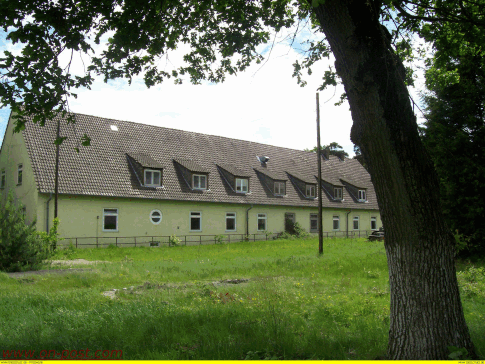
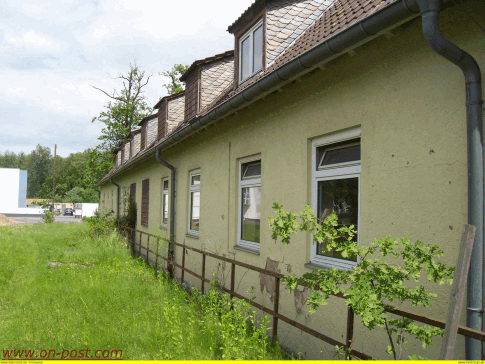
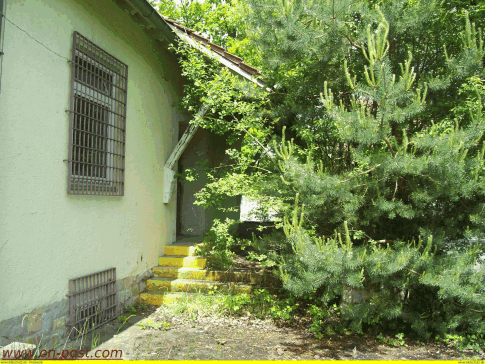
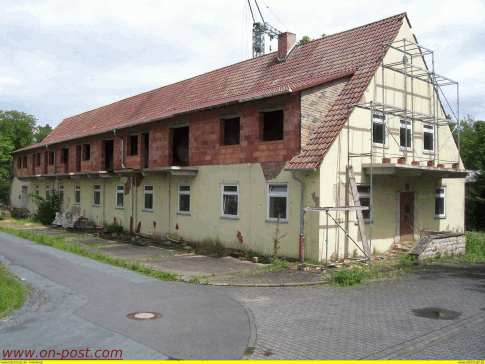
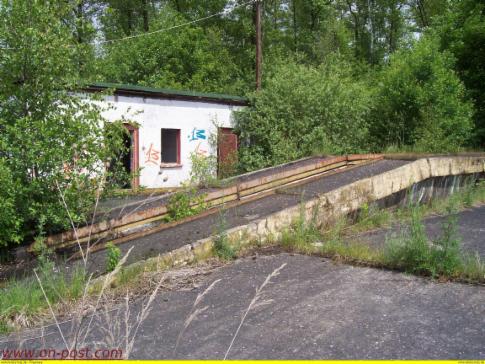
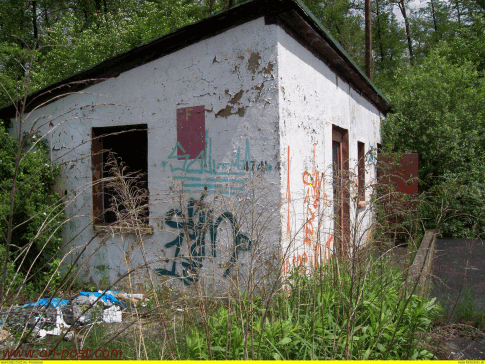
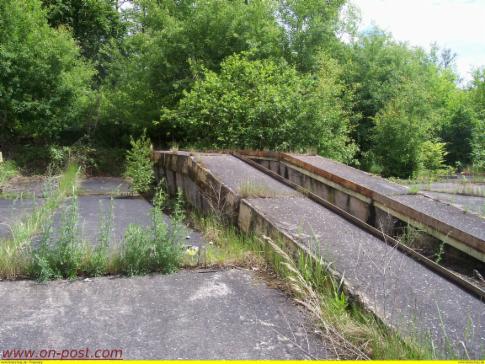
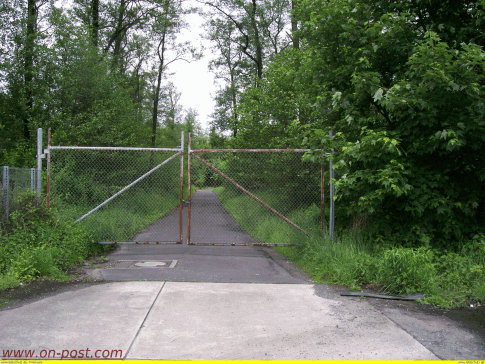
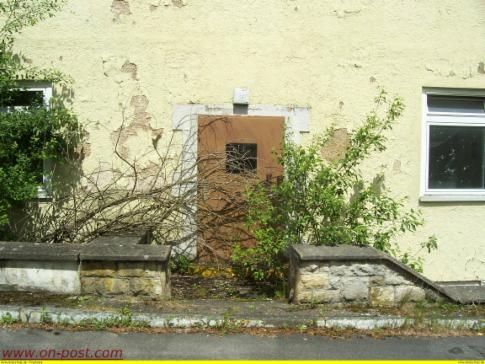
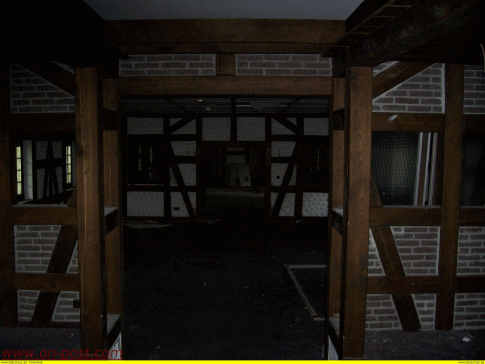
all pictures by on-post.com ©2011
__________________________
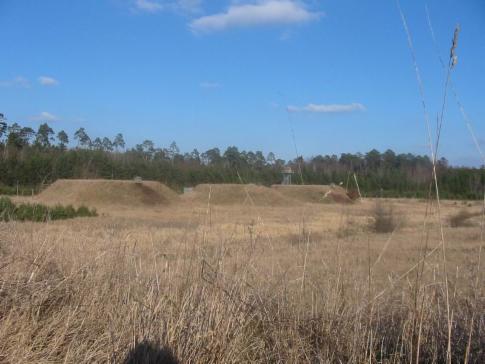
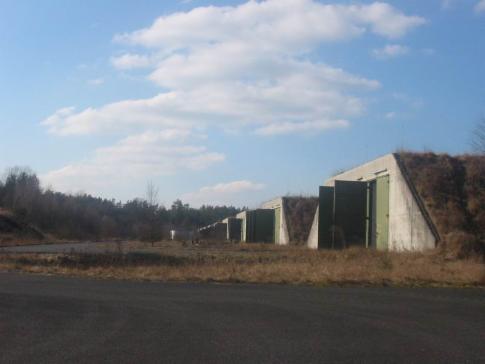
_____________________________________________________________________________________________________________________
Graphics, Articles and photos on this web site are posted by permission of their owners and are for viewing only. They are not for general distribution, nor for use on other websites, unless permitted by the web master or the original owner. If you find any files on this site that you believe are unauthorized, please contact the web master immediately so that the issue can be resolved.
___________________________________________________

©on-post
Capt Charles Cutshaw, 545th Ord Commander (Left)
and CWO D.J. McKenna
at a German Army function
-Darmstadt 1973-
and CWO D.J. McKenna
at a German Army function
-Darmstadt 1973-
__________________________

©Scott Fuller
Muenster in the 1970's
The nuclear weapons storage area, surrounded by conventional weapons bunkers.
Thanks Richard!
The nuclear weapons storage area, surrounded by conventional weapons bunkers.
Thanks Richard!
Click here to SUPERSIZE
__________________________
All photos ©Terry Overturf
All photos ©Terry Overturf





used with permission by Terry Overturf©2011
__________________________
All photos © Richard Little

Larry Robbins
1978
1978

with duel wheels on the front axle.

Front left to right, Gary Petersen, Larry Robbins
and Dave Vriesman.
1978

Richard Little always seemed to haul the forklift.
1978

1977

towards the front gate.
1977

Boy he got PO'ED. But we didn't care.
1977

Later went to Meisau as the Battalion Sgt. Major.
Picture taken around late 77 or early 78'.

1977

Fasching 1977

Fasching 1977


They put Richard Little behind the Michelsbrau Float and I had the Olympic theme going. The fellow behind the beer float was the Torch Carrier for my float.
Everytime I needed a beer all I had to do was blow the horn and hold up two fingers and poof. I had two beers.
Life was good that day.

1976
_________________________________
Pictures from the Internet


















The back area is closed to the public.
The German Government has spent thousands of dollars to remove the Ordnance left over from the German Wehrmacht in WWII.
With the Americans about to liberate Muenster in March of 1945, the Germans destroyed the bunkers thus scattering Ordnance throughout the Munster complex.
The pictures above are copies from the
INTERNET.
There for not my property.
__________________________

©John Hill

©John Hill
used with permission by John Hill©2011
All photos © James Rush



CPT Bone and Lt Nutt





Darwin Jarred

Julian Rodriguez

Lt Bonones, Darwin Jared, Julian Rodriguez
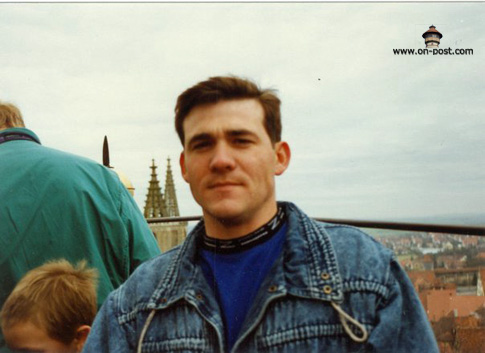

James Rush
_________________________________
All photos © Don Henderson

The Outback Gate

The Barracks and winter
in Munster,1991
in Munster,1991


Snow in Deutschland




...went to Berlin
and came back with a piece of the wall!
and came back with a piece of the wall!
used with permission by Don Henderson©2011
_________________________________
All photos © Scott Copeland

Price, Guyton, Pate & Scott Copeland

Dale Owens..that was my beer pitcher she was holding.
Blew up a $600 power amp at that party
Blew up a $600 power amp at that party

SGT Burt having a cold one

Robert Oliver


Kevin Topp, Cortezi, Ray Donaldson, Scott Copeland, Rob Bowers, Allen Vivian, JJ & Tim Grix

Ray Donaldson
used with permission by Scott Copeland©2011
____________________________________
All photos © Robert McMillin

Wasson, Me, Dryer, Miller, Mayo and Lt Molero

James Clemons and Hanson
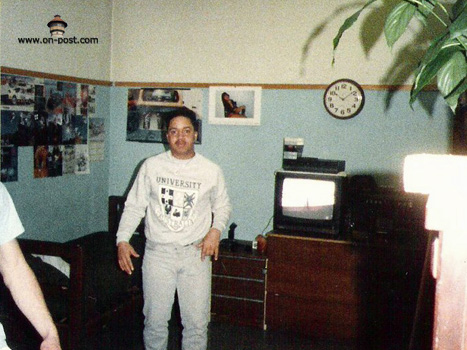


May & Miller

in Babenhausen

My Ride for the 20 months I was at Munster

-2010-
used with permission by Robert McMillin ©2011
_________________________________________
All photos © Ted Bennett

View of Tower 1 from Tower 2

View of the Compound

View from Tower 4
used with permission by Ted Bennett©2011
_________________________________
©Kevin McCourt
On my 2nd tour, I saw many of our trucks down in Germersheim.
This was a mission Dostie and I were on.
This was a mission Dostie and I were on.
used with permission by Kevin McCourt©2011
__________________________
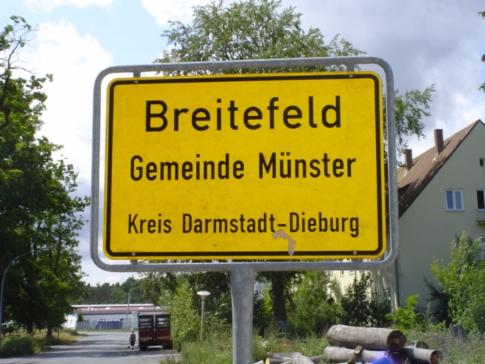
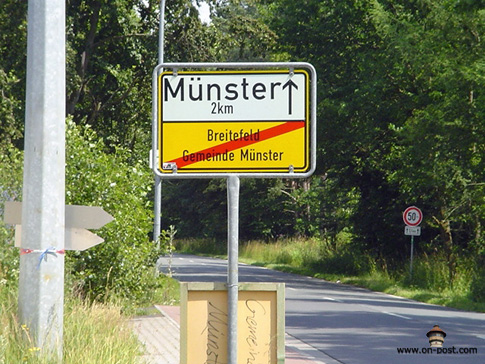
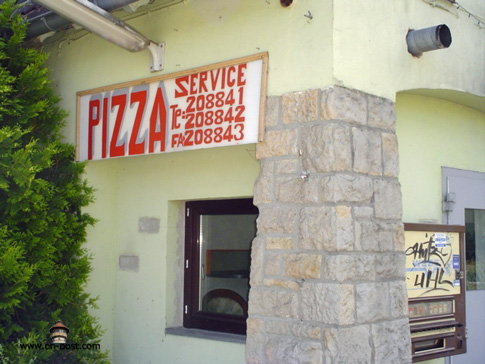
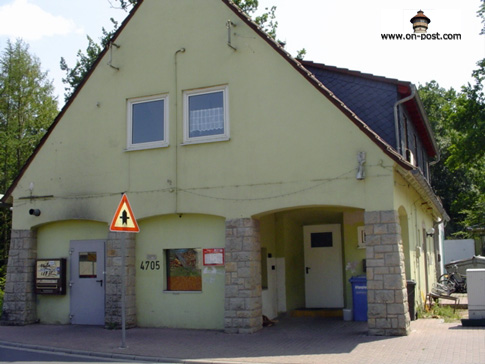
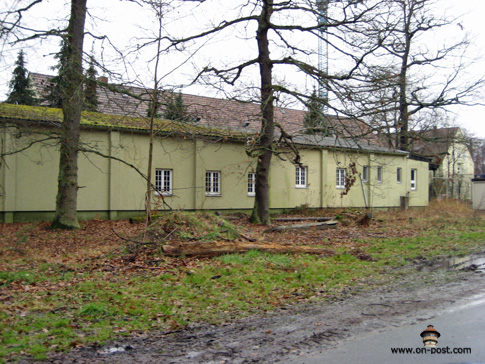
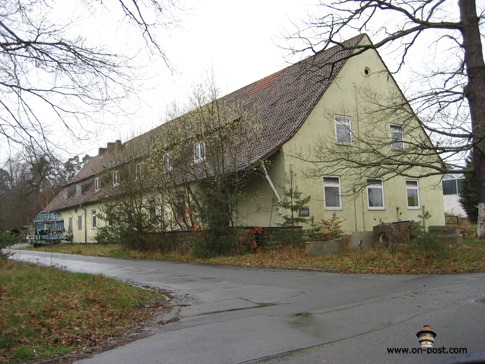
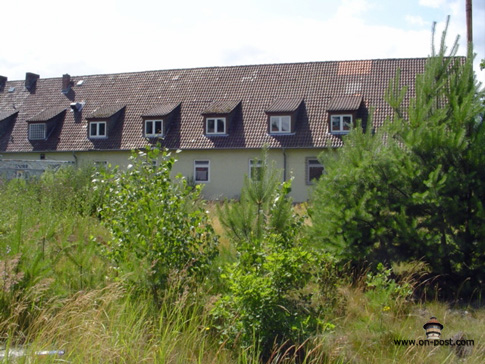
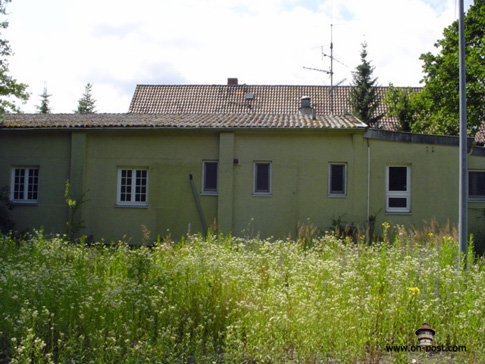
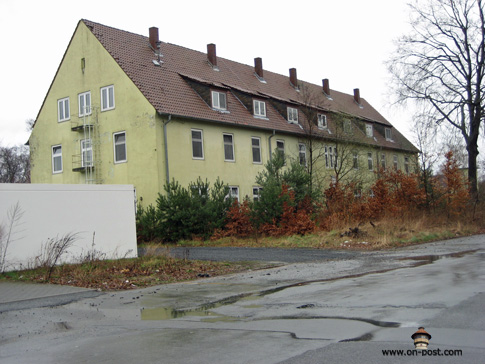
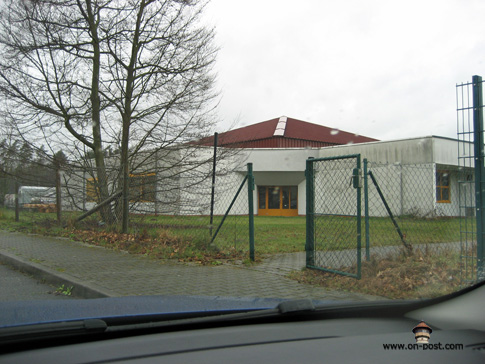
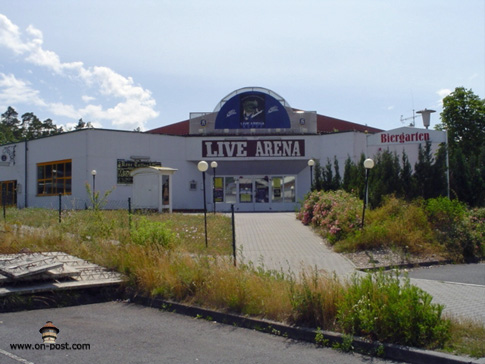
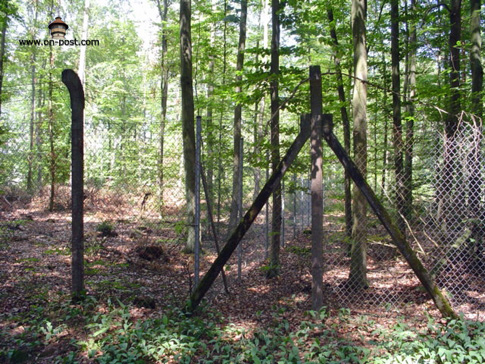

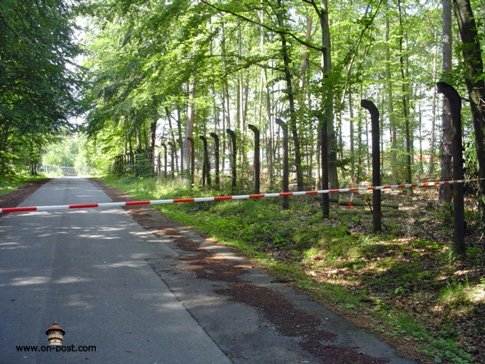
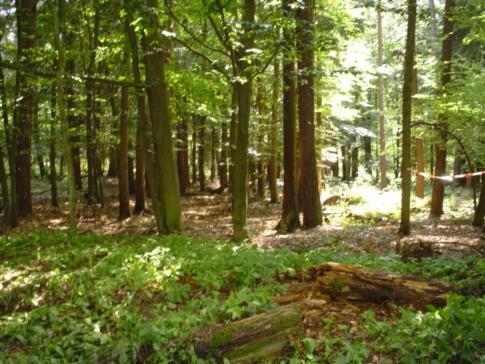
used with permission by Kevin Cheatham©2011
Muenster Kaserne
-2005-
used with permission by Kevin Cheatham©2011
______________________________________________
Muenster Kaserne
-May 30 2010-All photos © on-post.com

Muenster Kaserne


and in a rather rundown condition,
enough to - PO any Co.
It is called "Breitefeld now.



The Muenster helipad & softball field.



Looking towards the north barracks.

The Flag pole & quad











.
Looking
towards the north barracks










Building 4753...
what used to be the bowling alley in 1973
what used to be the bowling alley in 1973
all pictures by on-post.com ©2011
__________________________


_____________________________________________________________________________________________________________________
Graphics, Articles and photos on this web site are posted by permission of their owners and are for viewing only. They are not for general distribution, nor for use on other websites, unless permitted by the web master or the original owner. If you find any files on this site that you believe are unauthorized, please contact the web master immediately so that the issue can be resolved.
___________________________________________________